The world's most destructive forest fires
Blazes that changed the world
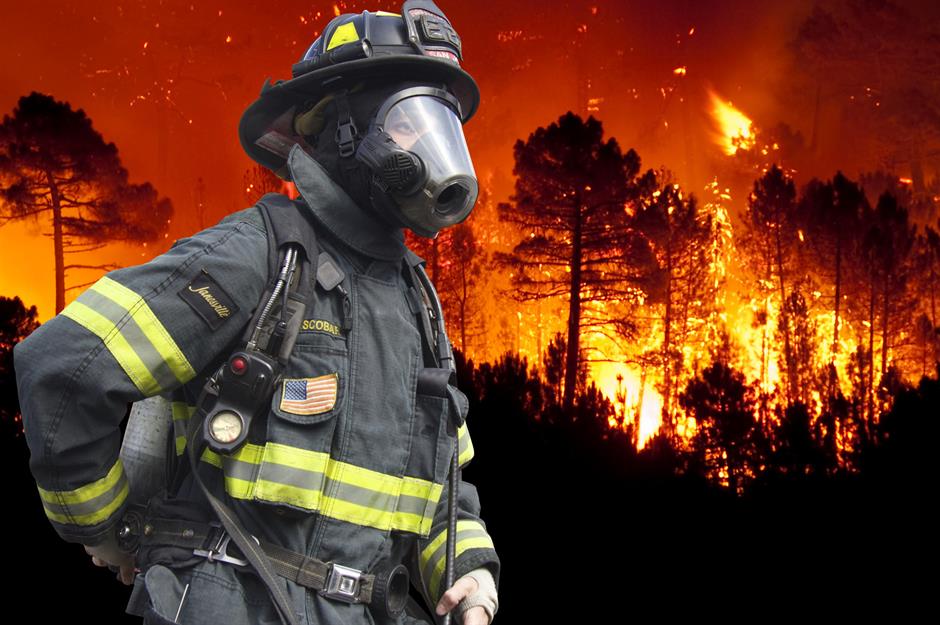
Sadly, forest fires have never been far from the headlines in the last few years. As the impact of climate change takes its toll and areas see record-breaking temperatures and droughts, violent blazes have flared up all over the world, from the Amazon rainforest to the streets of Los Angeles. We've rounded up history's most destructive infernos, stretching from the 19th century up to the present day.
Click through this gallery to learn about the world's worst fires – as well as why they happen...
What causes forest fires?
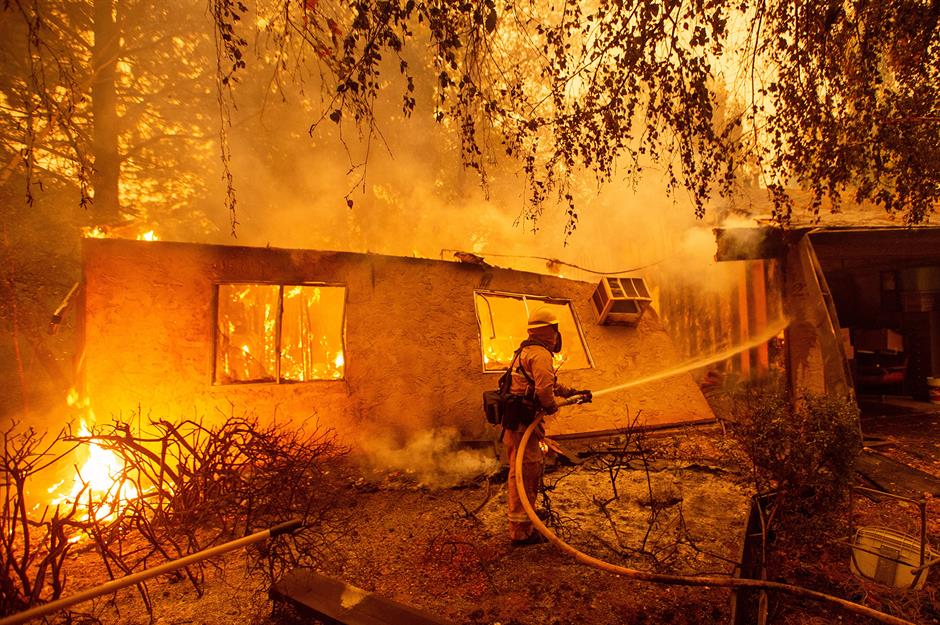
Forest fires can start in any number of ways and the cause could be natural, human or both – in fact, controlled burns are sometimes used as a tool for forest management. In short, the fires frequenting the media in recent years have a range of different starting points. In warmer parts of the world – think Australia or California (pictured) – drought and hot weather means vegetation dries out and becomes the perfect fuel for fire.
What causes forest fires?
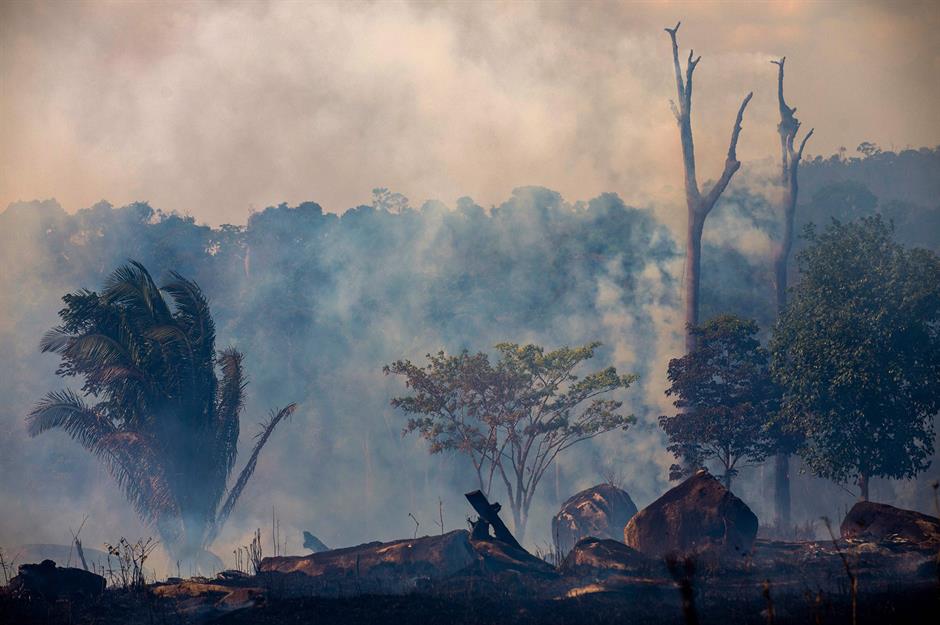
The initial spark could be caused by natural lightning, a felled power line or a carelessly lit campfire – generally exacerbated by strong winds and continuing scorching temperatures which can see the fire spread out of control. Arson can also be a factor, as can the slash-and-burn techniques employed by some farmers, especially in places like the Amazon (pictured). The latter involves clearing land for agriculture by cutting and burning vegetation and trees.
Are they on the increase?
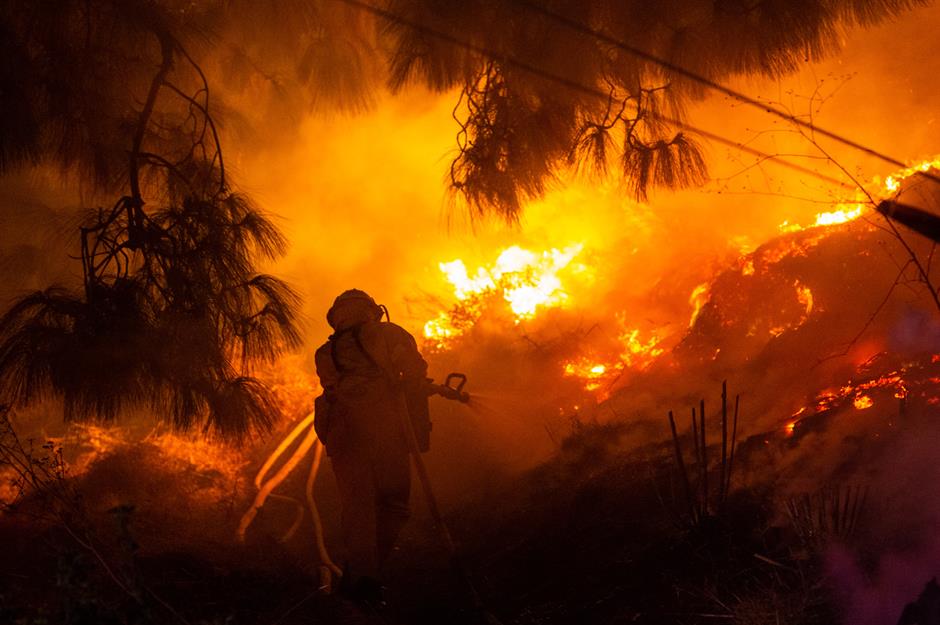
According to Tom Eames, a PhD candidate for Free University Amsterdam's fire research group, the number of fires in some regions – California and Australia, for example – has increased over the decades. The levels in California are around eight times what they were in the 1970s. He told loveEXPLORING: "That is certainly attributable, at least in part, to global warming – warmer weather means these areas dry out faster, and so are susceptible to fire for longer periods in the year."
Are they on the increase?
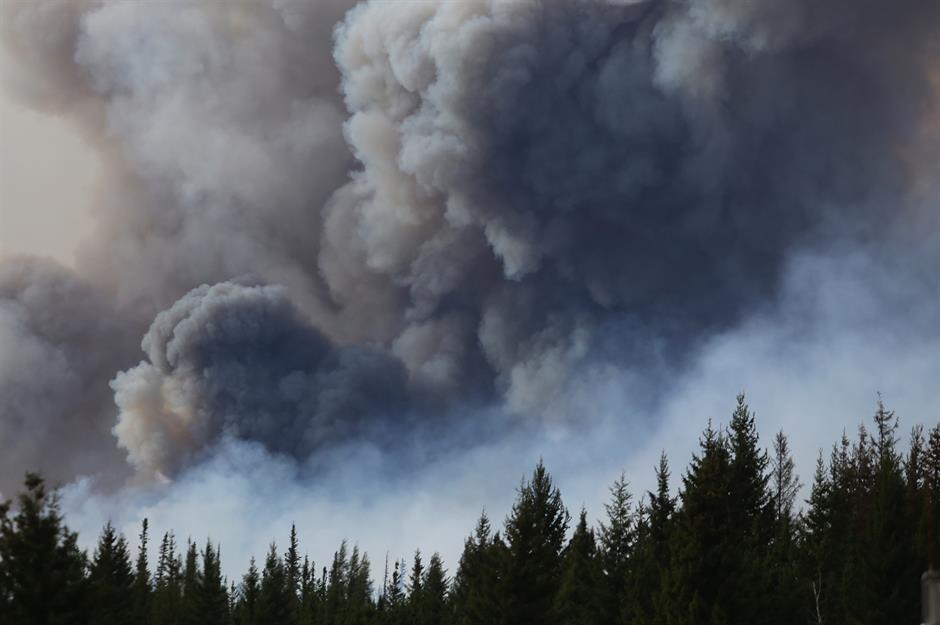
Eames says that fires in colder parts of the world – boreal regions of Russia, Canada and Alaska, for example – are on the rise too. "The Arctic is warming faster than the global average," he said, "and as warmer temperatures push further north, thunderstorms push further north too."
This leads to "an overall increase in lightning ignitions in the region", as well as lightning ignitions in places that hadn't been affected much previously. He added that, generally, the further north you go, natural ignitions (ie. lightning) become more common than human ignitions.
Peshtigo Fire, Wisconsin, USA, 1871
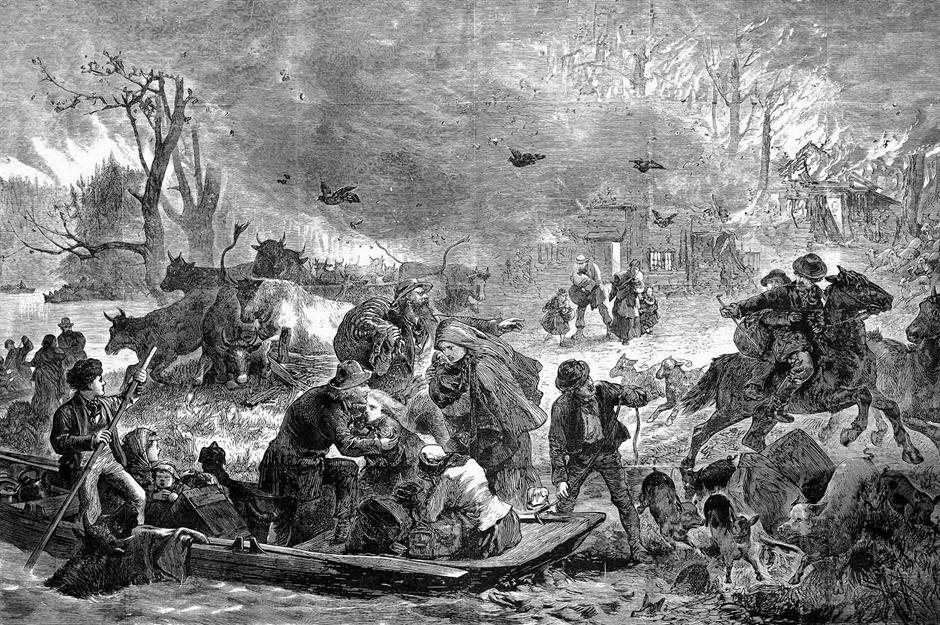
North America has been ravaged by forest fires throughout the centuries and more recently. To date, though, America’s deadliest fire remains the Peshtigo Fire of 1871. What began as a small fire in the brush was worsened by a strong cold front, and the resulting fire tore through northeastern Wisconsin, destroying around 1.2 million acres and killing more than 1,200 people in October 1871.
Follow our Facebook page for more weather features and travel stories
Great Fire of 1910, Idaho and Montana, USA, 1910

Some four decades later another fire devastated the States. The Great Fire of 1910 is one of the largest fires in US history, gutting three million acres in the northwestern states of Idaho and Montana.
To this day, the cause remains unknown, but the fire raged on for days, suffocating great swathes of North America in a cloud of smoke. It was finally quelled by rain, but had tragically already killed 87 people, most of whom were firefighters. This photo shows the devastation of a white pine forest in Idaho.
Cloquet Fire, Minnesota, USA, 1918
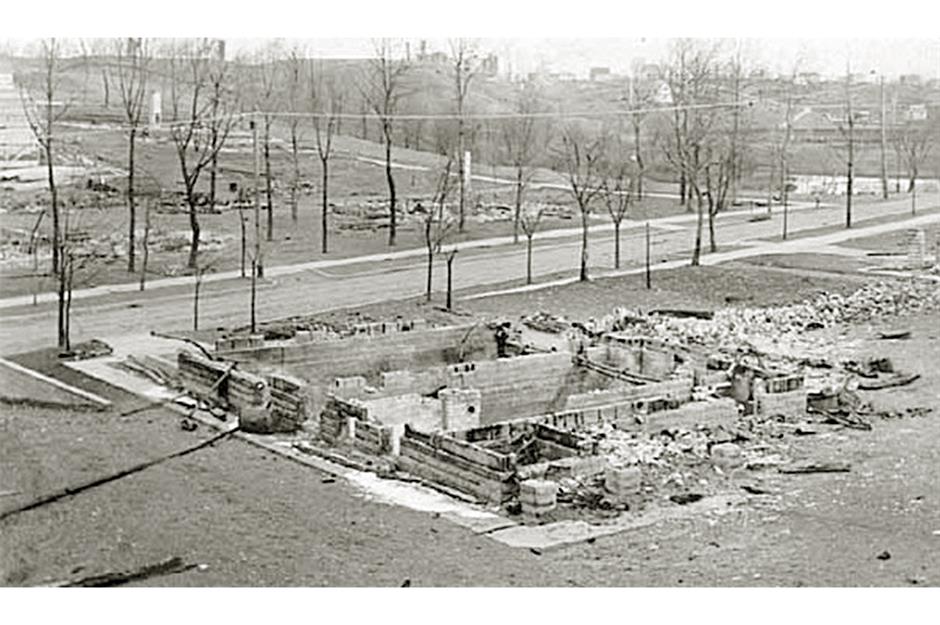
A particularly dry summer and early autumn, coupled with sparks from a passing train near Sturgeon Lake, led to the catastrophic Cloquet Fire. The fire began on 12 October 1918, then, whipped up by high winds, spread eastward swallowing some 38 towns and villages, destroying 4,000 homes and killing more than 450 people. It remains the worst natural disaster in the state of Minnesota, and this photo shows the destruction caused by the fire in a residential neighbourhood of Cloquet.
Black Friday Bushfires, Victoria, Australia, 1939
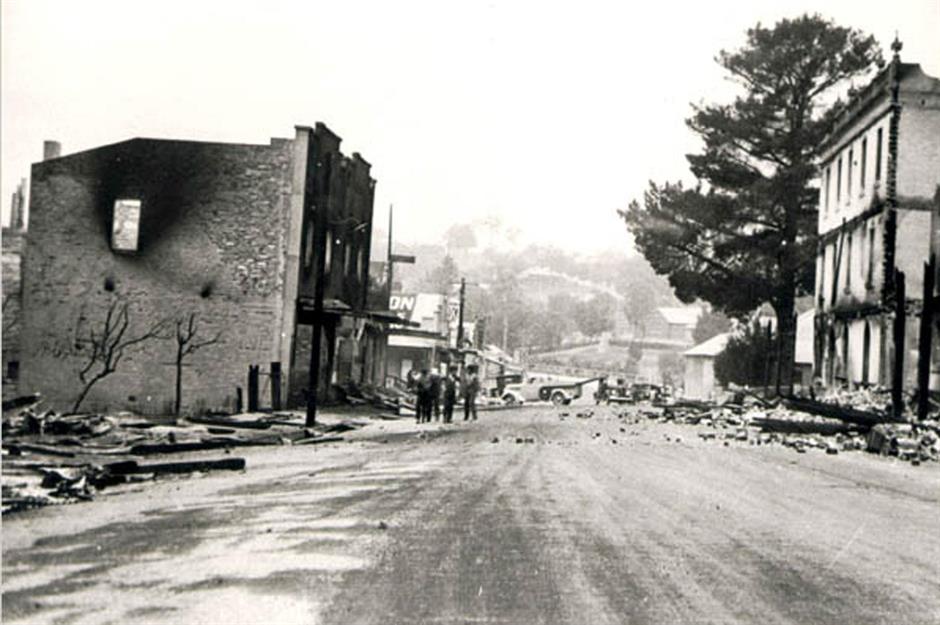
Bushfires are a sadly common occurrence in Australia, and two of the country's most damaging infernos have happened in the state of Victoria. One of these was in 1939, when several years of drought and a heatwave ended in a series of deadly blazes. Careless fire lighting by landowners and forest workers was also apportioned some blame.
Soaring temperatures and fierce winds meant the fires mushroomed out of control. They scorched more than 4.9 million acres of land and around 75% of the state was affected. Whole towns were swallowed up by fire and at least 71 people were killed.
Chinchaga Fire, British Columbia and Alberta, Canada, 1950
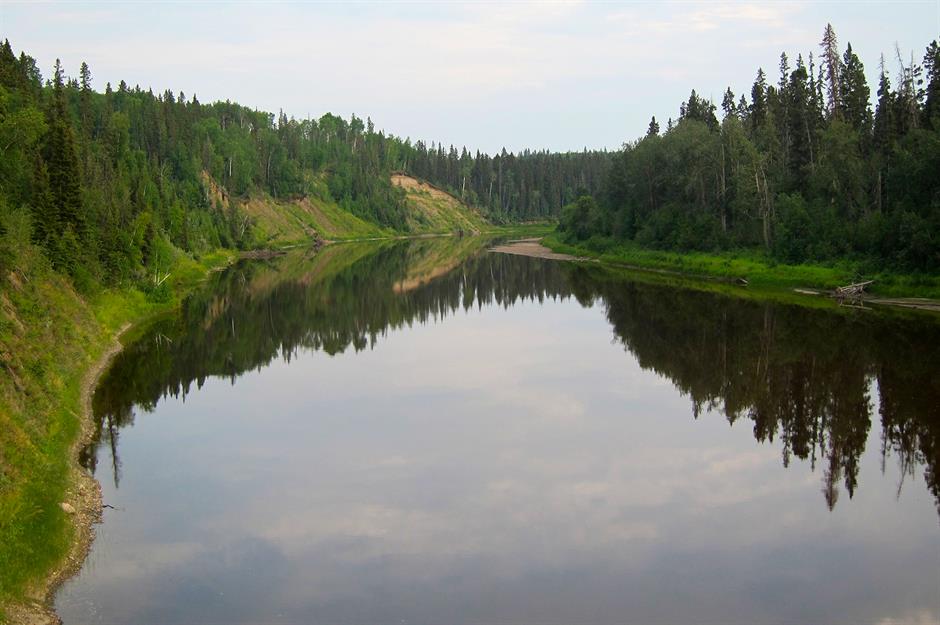
The Chinchaga Fire, or the Chinchaga River Fire as it's also known, remains in joint-first place as the world's largest forest fire in the Guinness Book of World Records. It was probably started by human activity, most likely slash-and-burning, and some three million acres of boreal forest across British Columbia and Alberta were burned.
The blaze lasted from early June right up to 31 October, and fortunately no human deaths were recorded. Pictured here is the forest-hemmed Chinchaga River itself.
Daxing'anling Fire, China, 1987

The Daxing'anling Fire, which blazed through the forests of northeastern China's Greater Khingan Range, pictured, is the other candidate in the Guinness World Records list for the world's largest forest fire (alongside the Chinchaga Fire). It ravaged the area from 6 May to 2 June 1987, and more than 200 people were killed as the fire scourged more than 2.5 million acres. It's uncertain whether the fire was started naturally or by human error.
Indonesia wildfires, Indonesia, 1997
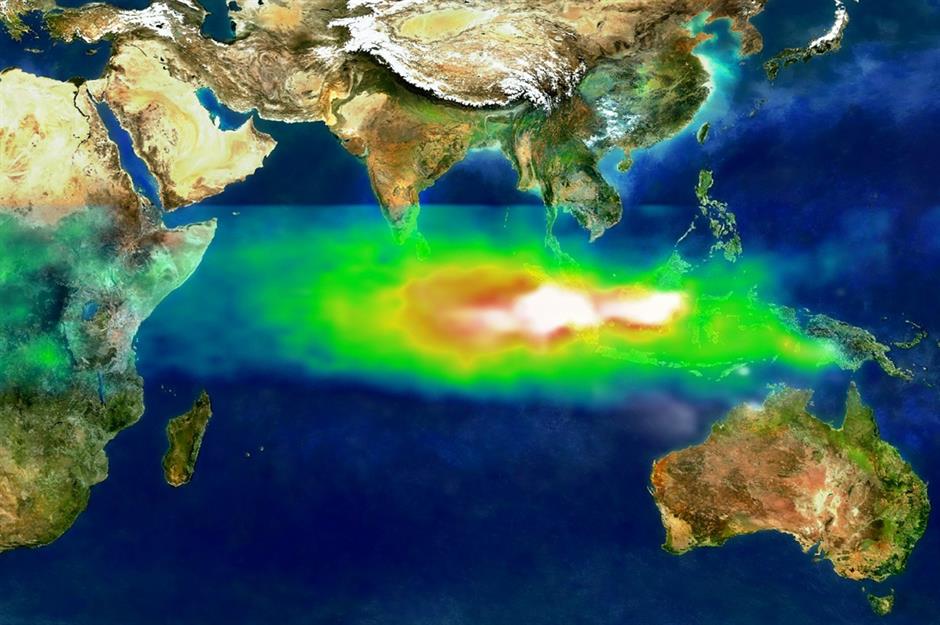
Large swathes of Indonesia were engulfed in a toxic haze in July 2019, thanks to the forest fires of the country's annual burning season, many of which are linked to slash-and-burn farming techniques. The 2019 fires caused an air pollution crisis, but they weren't Indonesia's worst.
Blazes in 1997 were among the most damaging in the country's history, and this NASA map shows the dangerous levels of pollution over the country at that time. The fires lasted right up until early 1998 and claimed the lives of at least 240 people.
Greece wildfires, Greece, 2007
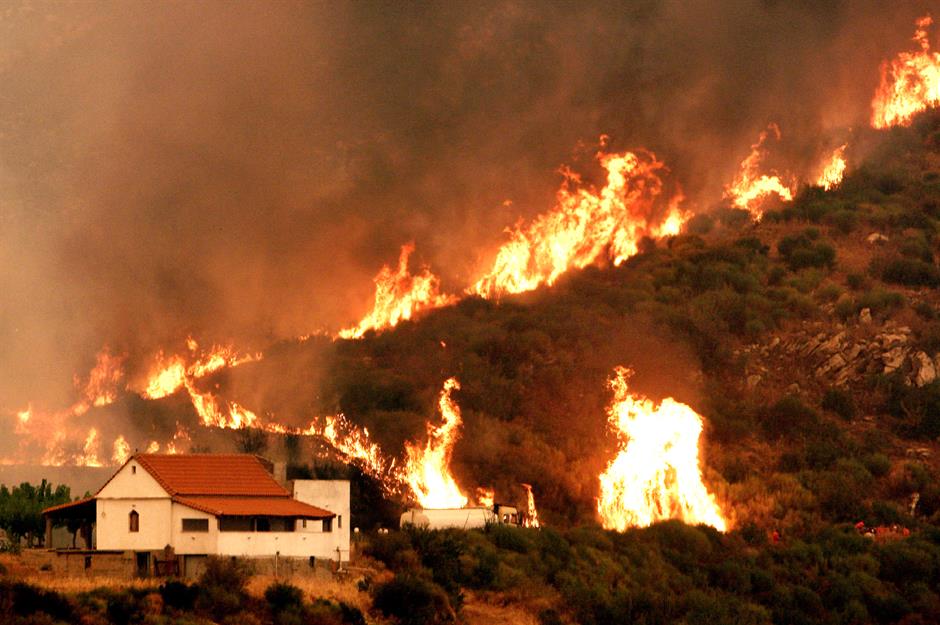
Europe is no stranger to forest fires either – and one of the worst-affected countries in recent decades has been Greece. In the summer of 2007, the country experienced catastrophic fires that consumed more than 670,000 acres of forest and other land across the Peloponnese.
Heartbreaking images littered the media, showing burned-out homes, grief-stricken families and charred farmland. These fires were not thought to be the work of Mother Nature, and were eventually attributed to arson or negligence. By the time the last fire had been extinguished at the start of September, the blazes had claimed at least 84 lives.
Black Saturday Bushfires, Victoria, Australia, 2009
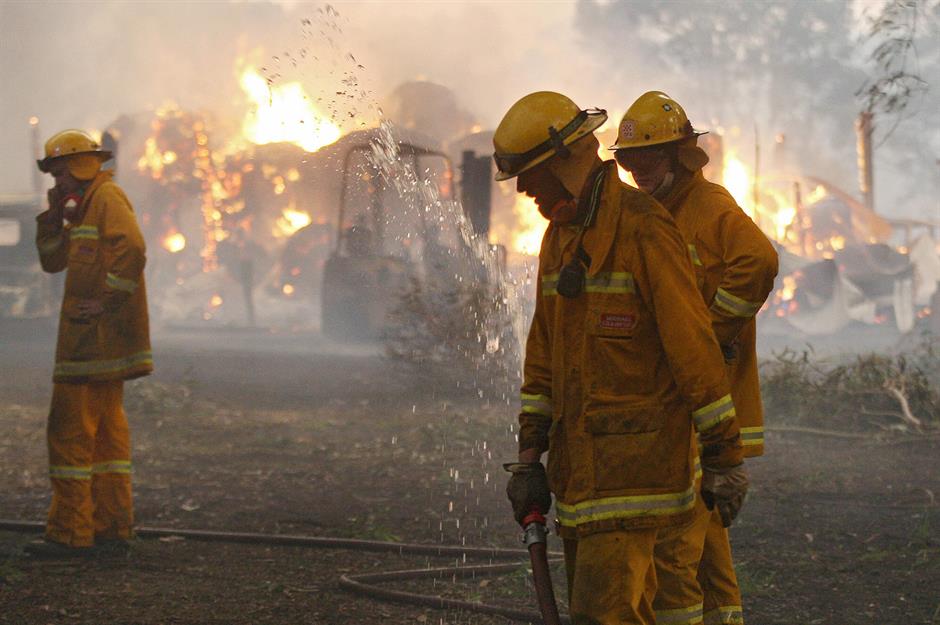
The Black Saturday disaster in 2009 remains the worst bushfire Australia has ever seen. Scorching temperatures – Melbourne hit record highs of 46.4°C (115.5°F) – and raging winds caused a deadly firestorm which destroyed large portions of the state of Victoria.
It's thought that a power line was felled by the violent winds, sparking an initial fire at Kilmore East, around 50 miles (80km) north of Melbourne. However, around 400 blazes raged during the firestorm, spreading across the state and impacting more than 78 communities. The death toll was reported at 173 people and the fires destroyed thousands of homes, cremating close to a million acres of land.
Indonesia wildfires, Indonesia, 2015
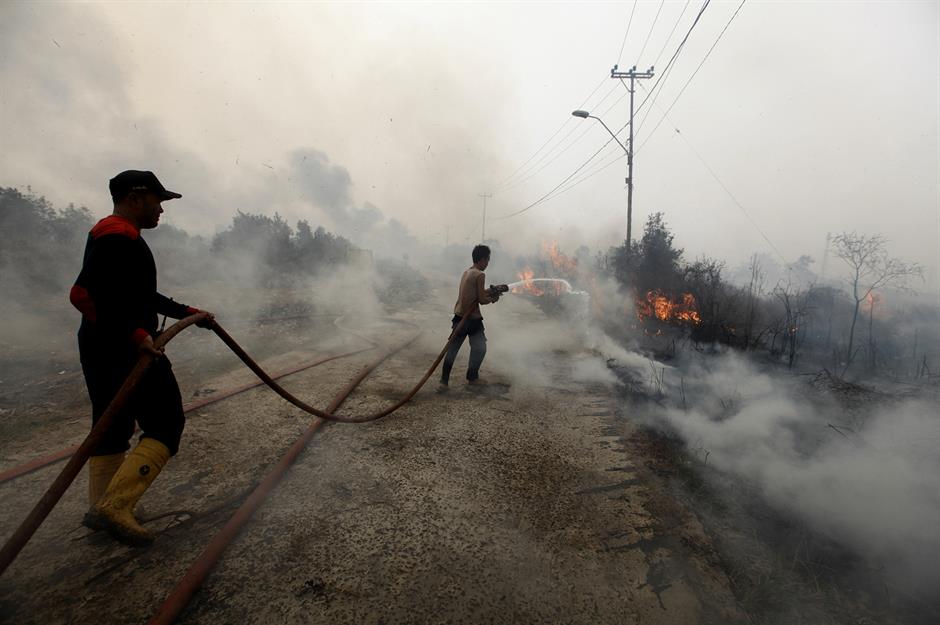
Indonesia experienced yet more calamitous forest fires in 2015, with areas of western Sumatra and southern Kalimantan hit the hardest. Torrid conditions and the El Niño weather pattern exacerbated the fires, which raced through the country's forests, destroying habitats, killing at least 19 people and causing many more to suffer dangerous respiratory tract infections. The fires started in the summer and lasted several months.
Fort McMurray Wildfire, Alberta, Canada, 2016

Described as the costliest natural disaster in Canada's history, the Fort McMurray Wildfire engulfed northern Alberta in May 2016. More than 2,500 homes were destroyed in the fire and some 88,000 people were forced to flee. Around CAD$3.6 billion ($2.8bn/£2bn) worth of insurance claims were also made as a result of the catastrophe, according to the Insurance Bureau of Canada.
The huge inferno started with a single blaze on 1 May in a forest just southwest of Fort McMurray, and by 3 May panic ensued as the city was swallowed by fire. It's unclear how the fire started, but authorities noted that the cause was most likely human.
Portugal wildfires, Portugal, 2017

Wildfires gutted parts of central Portugal from 17 June 2017, with the initial blaze breaking out near the small municipality of Pedrógão Grande, around two hours northeast of Lisbon. It's thought that the fire, which started during a severe heatwave, was started when lightning hit a tree during a dry thunderstorm.
Portugal wildfires, Portugal, 2017
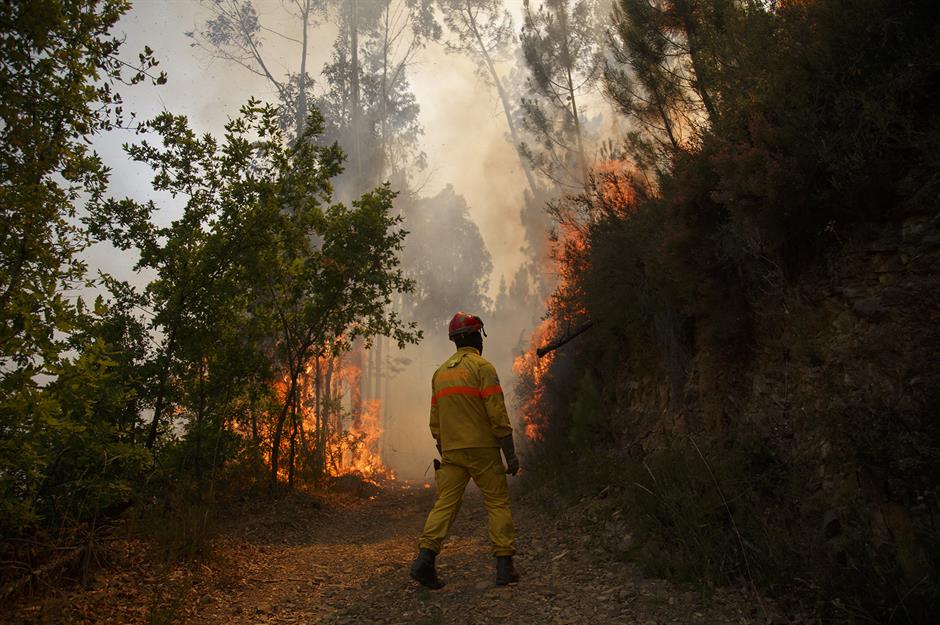
More than 60 people died in the firestorm, with much of the devastation occurring around Pedrógão Grande itself, and the blaze is considered the deadliest in Portuguese history. Reports differ but it's thought that more than 100,000 acres were burned. The country experienced more destructive fires in the summer of 2019, prompting a response involving more than 800 firefighters.
Tubbs Fire, California, USA, 2017
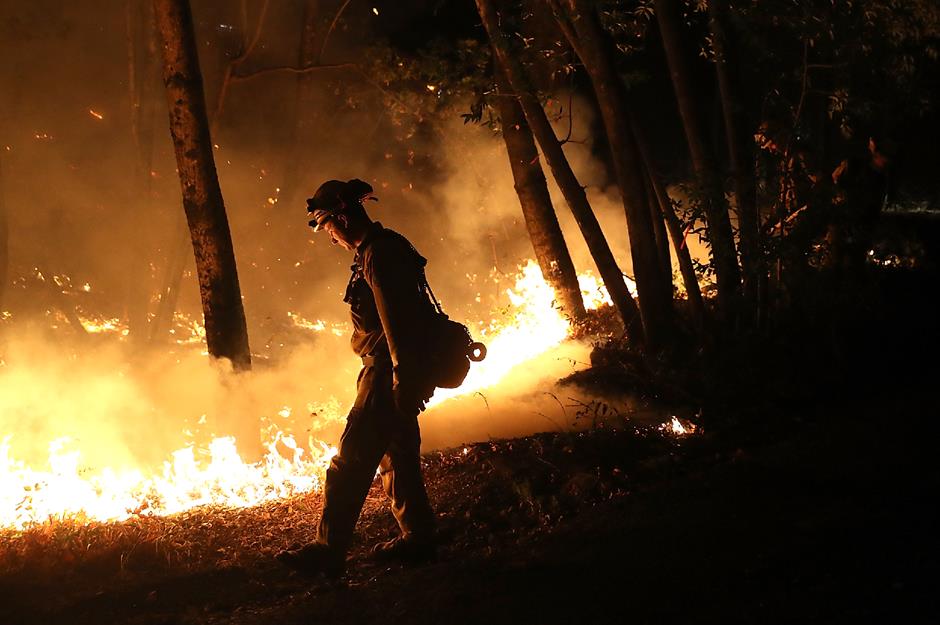
Wildfires in California have grabbed headlines in recent times – and they're on the rise. The Tubbs Fire, which rushed through California's wine country in 2017, was the most devastating wildfire in the state's history at that time. It's thought the fire was started in the city of Calistoga by sparks from fallen power lines, before intense winds fanned the flames.
The city of Santa Rosa, with other areas of Sonoma, Napa and Lake counties, was gutted by the blaze, with more than 5,000 homes and buildings destroyed and at least 22 people killed. Years later, the stricken communities are still feeling the effects.
Camp Fire, California, USA, 2018
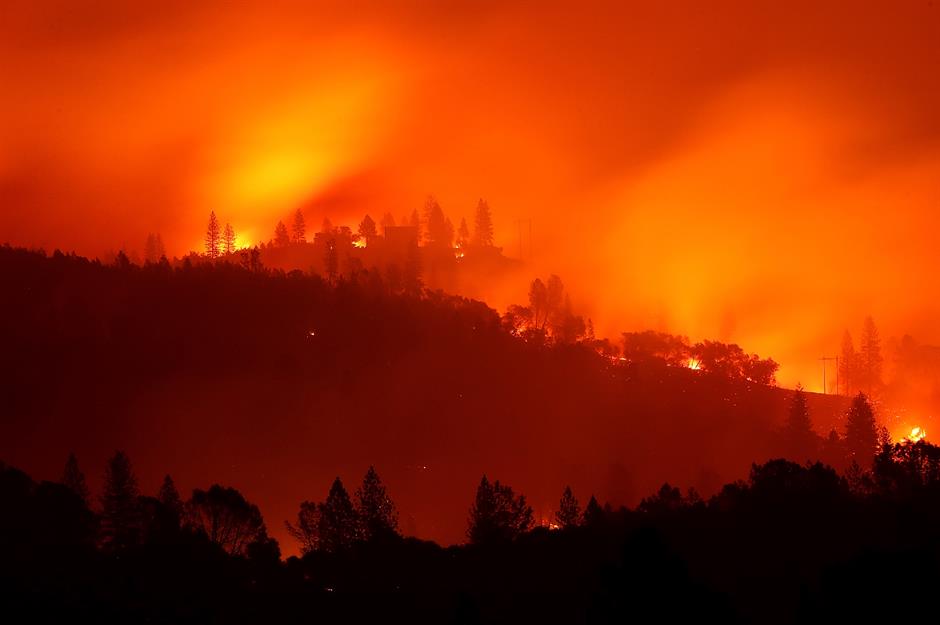
Just a year later, an even deadlier fire tore through northern California's Butte County. Camp Fire, named as it began along Camp Creek Road, raged on for 17 days, and was caused by sparks from electrical transmission lines, which set fire to vegetation dried out by drought. Fierce Diablo winds meant the fire grew at a rapid rate.
Camp Fire, California, USA, 2018

The small Butte County town of Paradise was the hardest hit by the fire – USA Today reported that the town lost more than 90% of its population. Overall, the fire took the lives of at least 85 people, ripped through 153,000 acres and destroyed around 14,000 homes. This photo shows the burned-out remains of a used car dealership in Paradise.
These are the deadliest natural disasters in American history
Attica wildfires, Greece, 2018
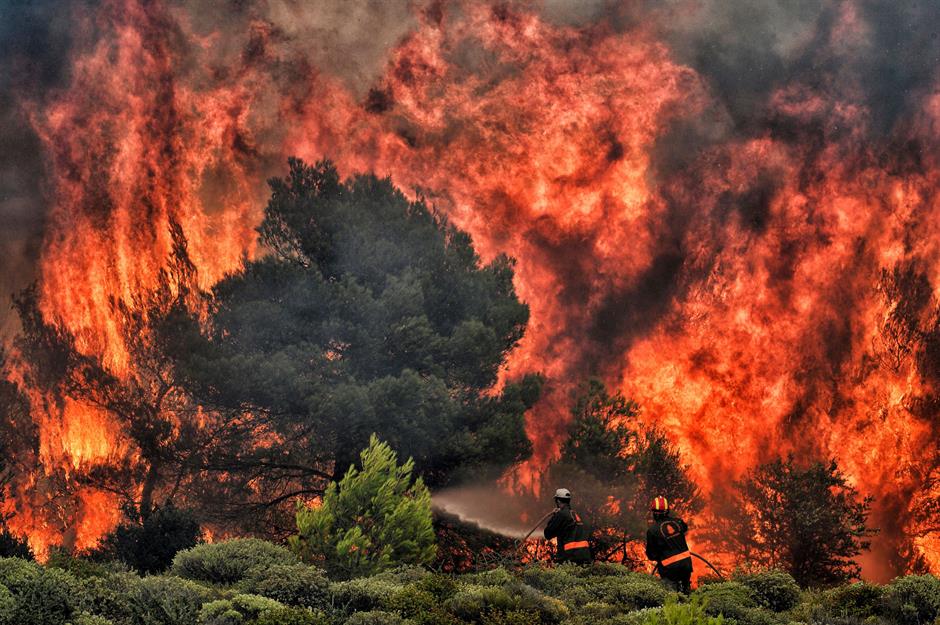
Greece saw one of history's deadliest wildfires in July 2018, as multiple blazes roared through resort areas near Athens in the Attica region. The town of Mati and the village of Neos Voutzas were both severely affected, as was the area around Kineta. More than 100 people died, some of whom had attempted to flee to the sea, and over 1,000 buildings were destroyed.
It's thought the fires may have been started accidentally by a 65-year-old man burning wood in his garden – and numerous people, including officials, were subsequently charged with negligent manslaughter, grievous bodily harm and arson in connection with the fires.
Amazon Rainforest fires, Brazil and others, 2019

The fires that ripped through the Amazon – the largest tropical rainforest on the planet – dominated news outlets around the world in the summer of 2019. While fires here can be naturally occurring, the events of 2019 were thought to have been primarily caused by slash-and-burn practices used by farmers to clear land for agriculture.
Amazon Rainforest fires, Brazil and others, 2019
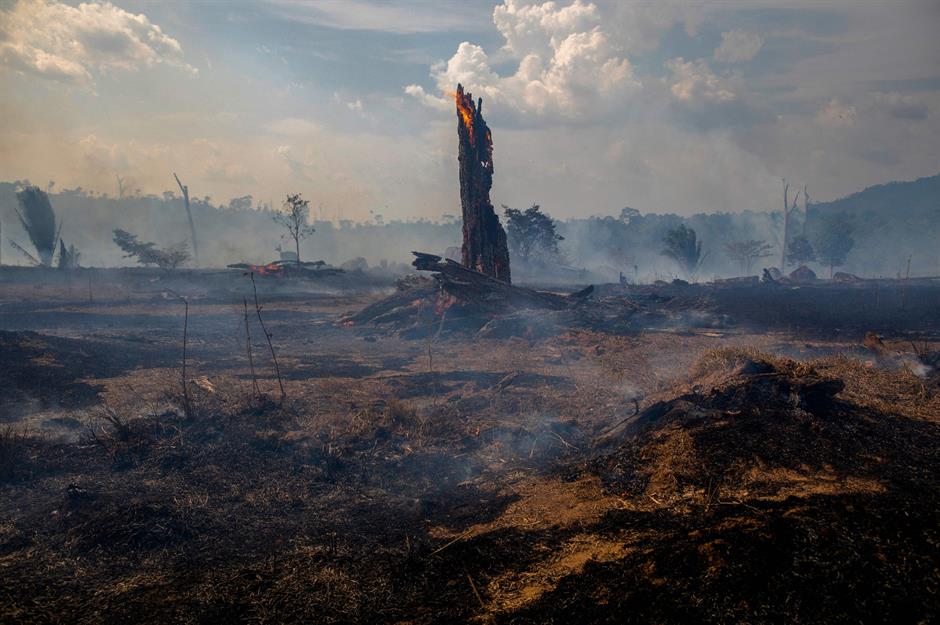
More than 30,000 separate fires raged during August alone – according to the World Wildlife Fund (WWF), that’s an increase of 196% when compared with August 2018. These numbers were the highest they’d been since 2010, though they still didn’t reach the levels of 2005 – one of the worst years in modern history for Amazonian fires. The effects were devastating, with smoke shrouding Brazilian cities such as São Paulo and the homes of Indigenous people and native wildlife destroyed.
Amazon Rainforest fires, Brazil and others, 2019
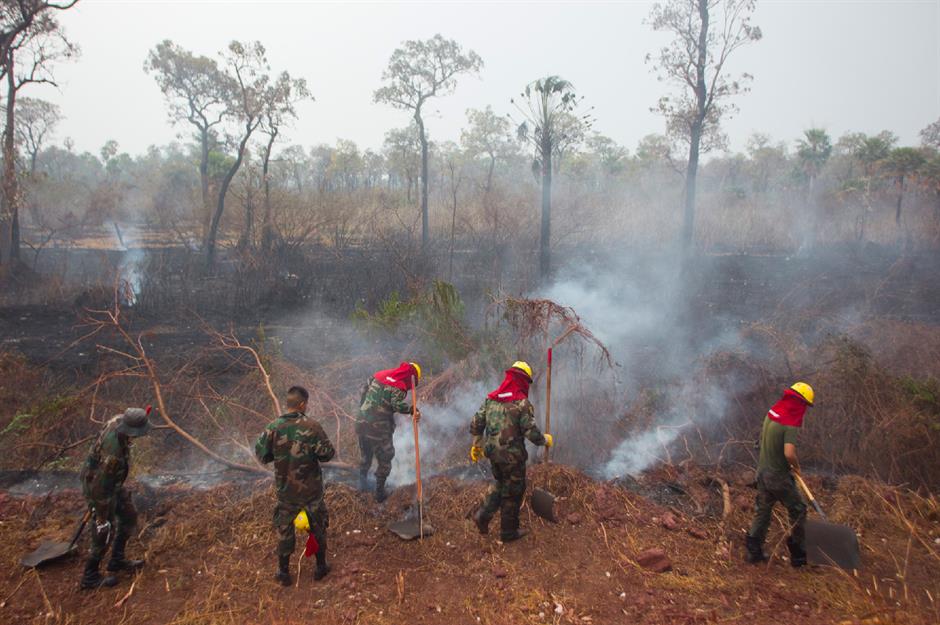
Brazil was the country worst affected and there were calls for then-Brazilian President Jair Bolsonaro to revise his attitude towards environmental regulation, deforestation and the protection of the rainforest. Bolsonaro enforced a 60-day ban on land-clearance fires towards the end of August. The pace of the fires slowed between September and October, but they served as a powerful wake-up call the world over.
Kincade Fire, Sonoma County, California, USA, 2019
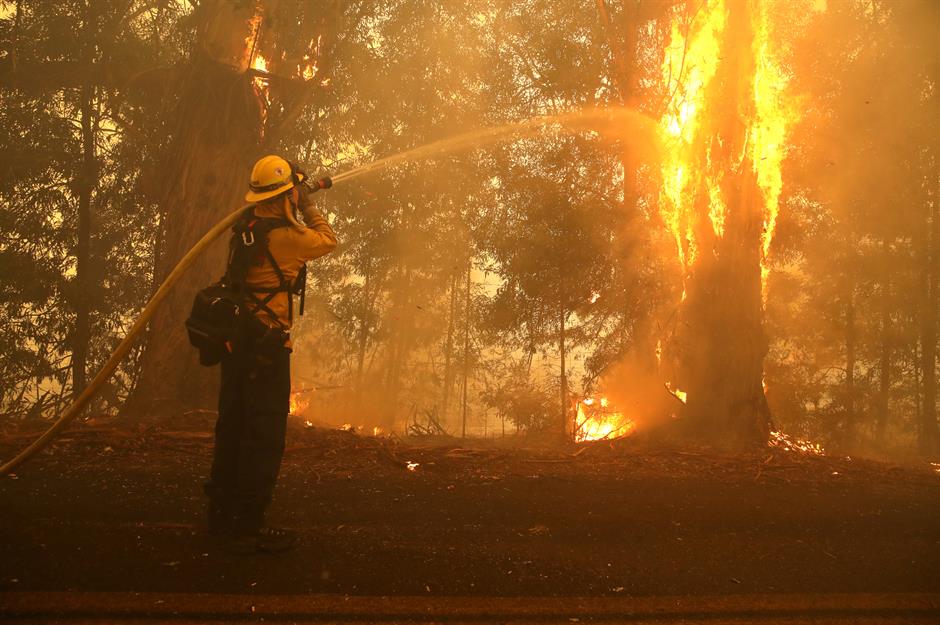
Wildfires continued to consume California in 2019 too, and the Kincade Fire was the largest of the season. More than 77,000 acres were burned in Sonoma County and almost 400 buildings and structures were destroyed. No fatalities were reported but at least four people were injured. Other aggressive fires blazed in Ventura County's Simi Valley, San Bernardino County and Los Angeles.
New South Wales bushfires, Australia, 2019
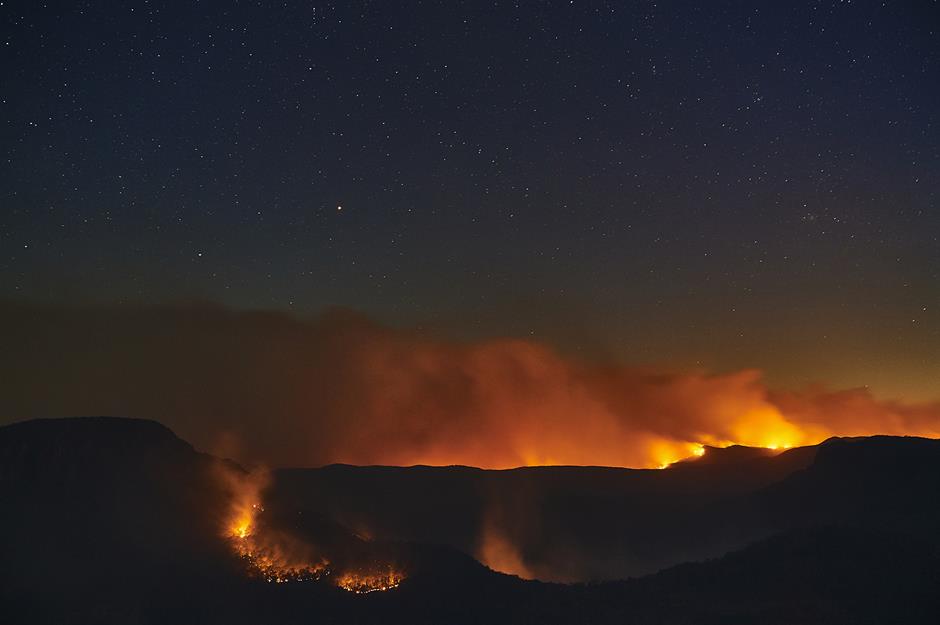
New South Wales also experienced deadly fires in 2019, and around 100 bushfires raged through the state in what was termed a "mega blaze" just north of Sydney, cloaking the city in smoke. On 31 January 2020, it was reported that fires had affected more than 12 million acres in New South Wales and had destroyed more than 2,000 homes. This photo shows a blaze near the Blue Mountains city of Katoomba – reportedly 20% of the Blue Mountains World Heritage Area was burned by the infernos.
Siberia wildfires, Russia, 2019
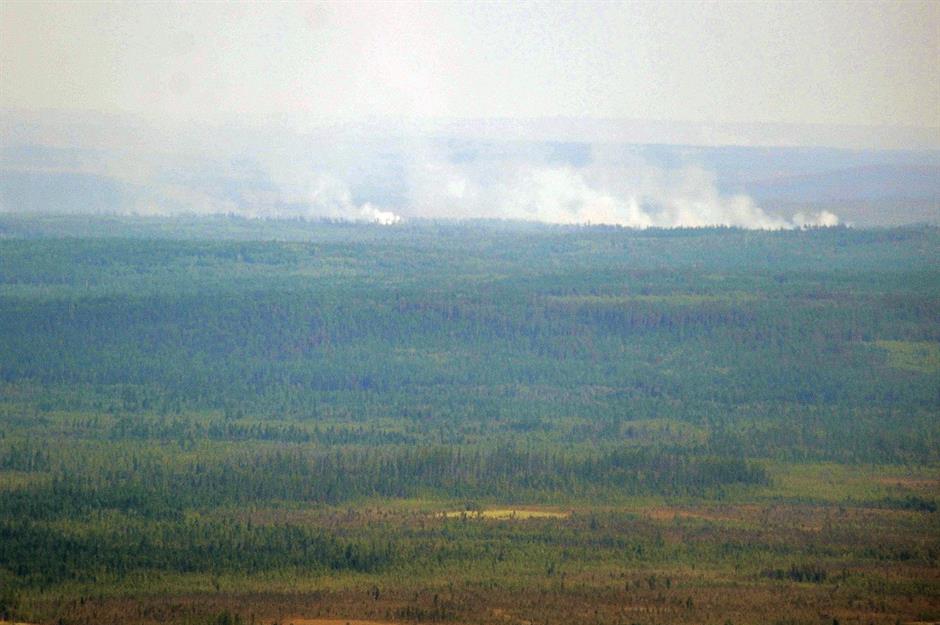
The vast and remote Russian region of Siberia also suffered serious forest fires in 2019. While wildfires here are not uncommon, experts say that the unusually warm weather and dry ground, paired with added thunderstorms and fierce winds, have led Arctic fires to spread quickly and violently in recent times. According to Greenpeace Russia, an area of around 8.2 million acres – that's more than the size of Belgium – was consumed by the blazes that year.
Siberia wildfires, Russia, 2019
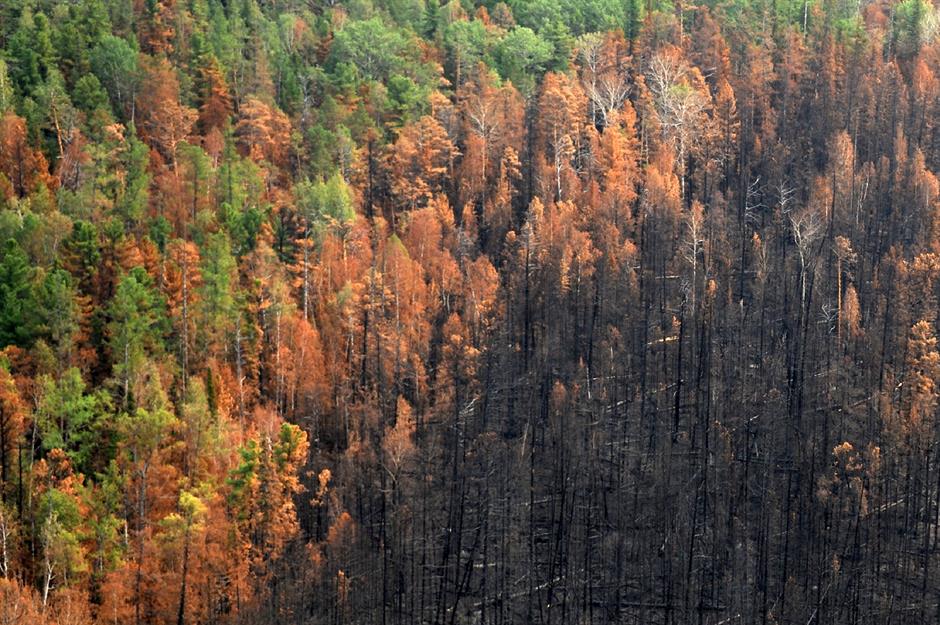
It's not 100% clear how the fires originated: some reports said they were started on purpose to conceal illegal logging, while others said they were caused by lightning. Russian authorities reported that the fires were finally extinguished at the end of September – by that time they had wrought an estimated £76 million ($100m) of damage, not to mention their impact on wildlife. Other areas of the Arctic, including Greenland, Alaska and Canada, were also impacted by fierce wildfires in 2019.
North Complex Fire, California, USA, 2020
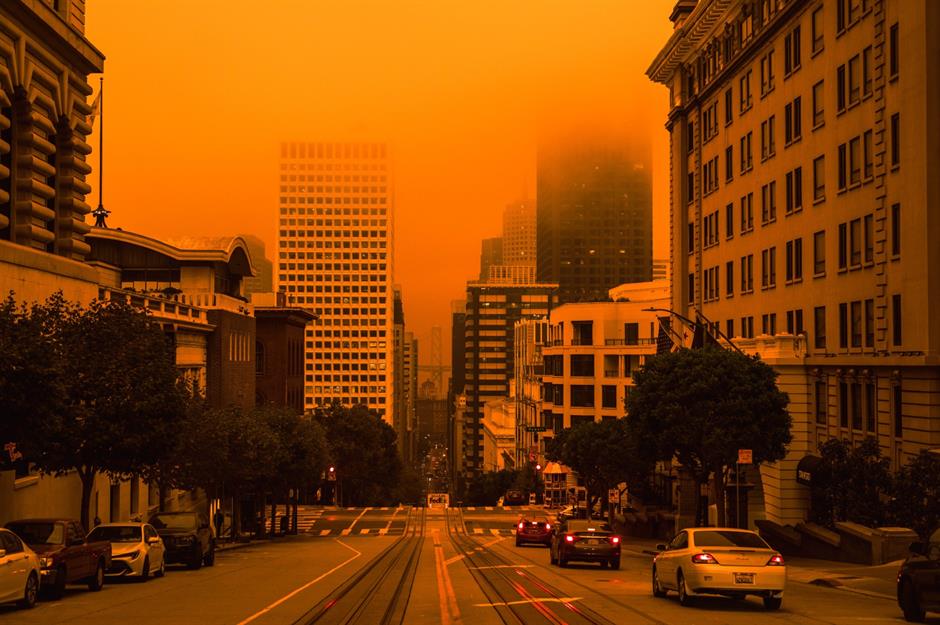
What might look like a beautiful sunset over downtown San Francisco in September 2020 was actually the beginning of the North Complex Fire. The fast and ferocious blazes, caused by lightning storms, engulfed the state, killing 16 people, destroying thousands of buildings and burning more than 300,000 acres.
It combined with further fires in late summer and autumn, resulting in a staggering 4.1 million acres being scorched and a further 15 people perishing. It was the state's worst wildfire on record at the time.
Western America wildfires, Western America, 2021
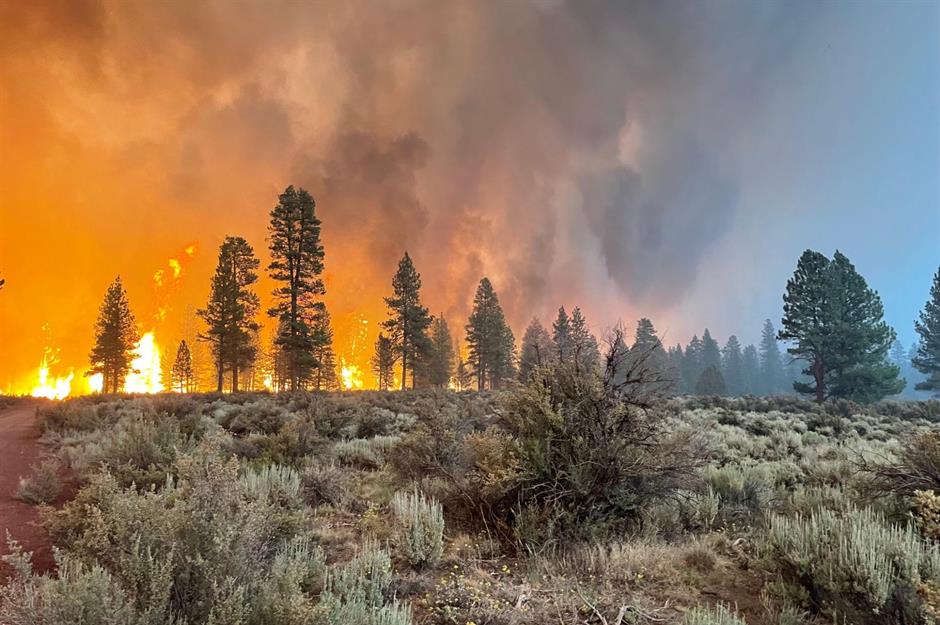
Following record-breaking temperatures in the Pacific Northwest in the last days of June 2021, the number of wildfires in the US was at its highest level in a decade. The fires ravaged a region from Alaska to Wyoming, with more than 60 recorded across 10 states on 13 July, worsened by drought as well as high temperatures. Firefighters attempted to put them out by dropping water from planes, but the air was so dry it evaporated mid-air.
Western America wildfires, Western America, 2021
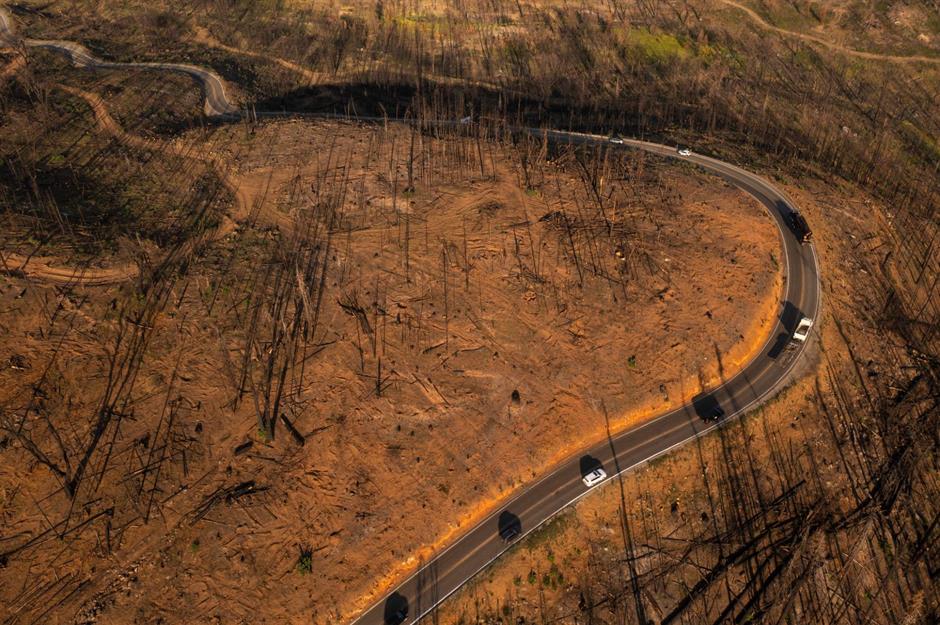
California (pictured) was one of the worst affected areas, and the number of fires overtook 2020’s fire season. Meanwhile the largest fire, in Oregon, razed an area twice the size of Portland. Large numbers of people had to evacuate their homes, people were urged to cut power consumption and around 16,000 firefighters were mobilised in an attempt to contain the blazes.
Dixie Fire, California, USA, 2021
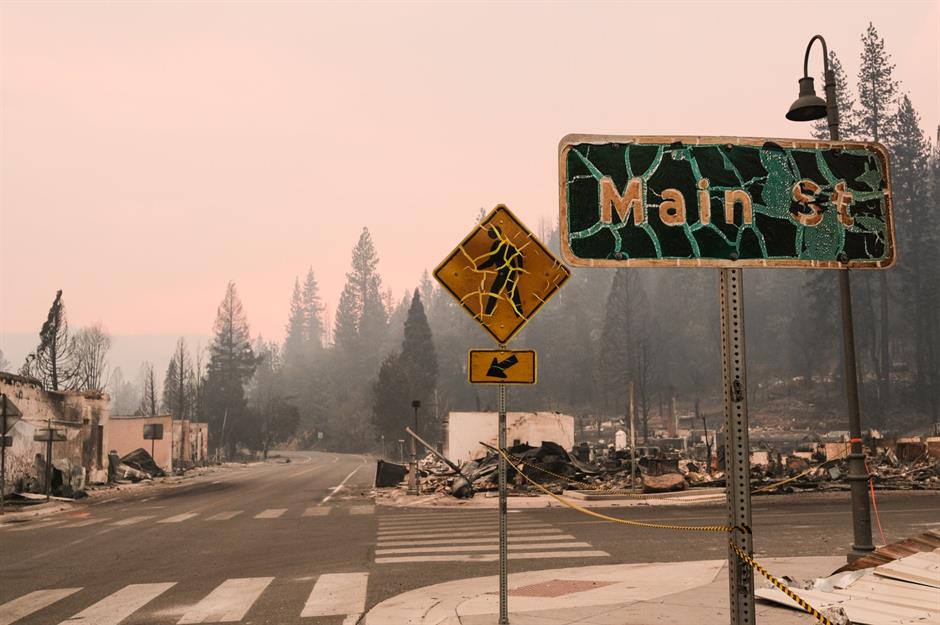
The Dixie Fire in California – named after the street on which it started – was the second-largest in state history, spreading to a colossal area of 963,309 acres and destroying 1,329 structures. Sadly, one firefighter died in connection with the blaze. On 5 January 2022, it was announced that the fire was caused by a tree falling on PG&E electrical lines.
Wildfires, Turkey, 2021
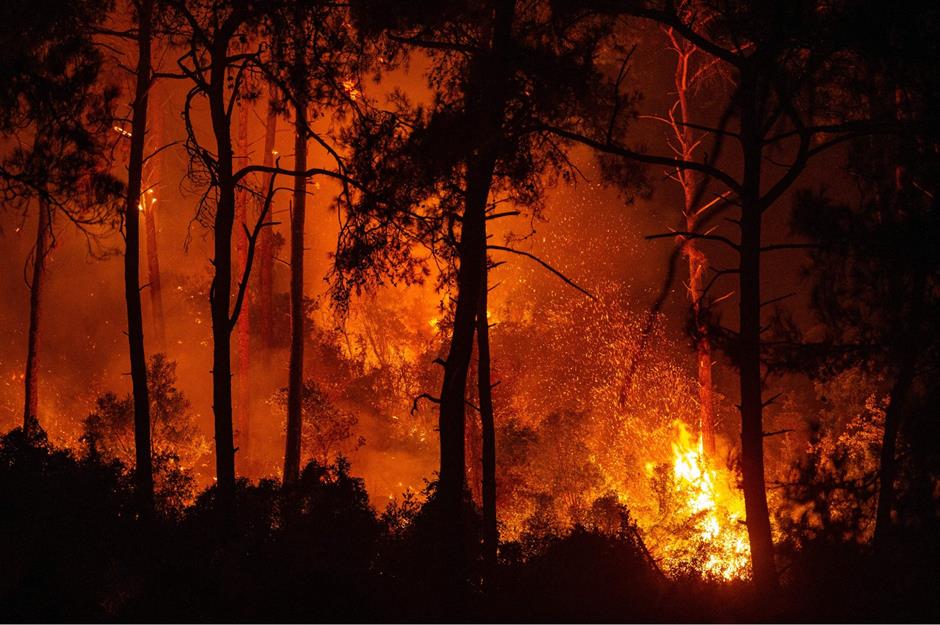
Turkey is known for its high temperatures, especially in peak summer, but a deadly heatwave fed by hot air from North Africa ravaged the country in 2021. More than 100 blazes caused by extreme heat intensity, which smashed a 20-year record, ravaged many of Turkey's southern coastal resort towns in late July, killing eight people and thousands of animals. Nearly 250,000 acres of land burned, with residents saying it was "raining ashes".
Wildfires, Turkey, 2021
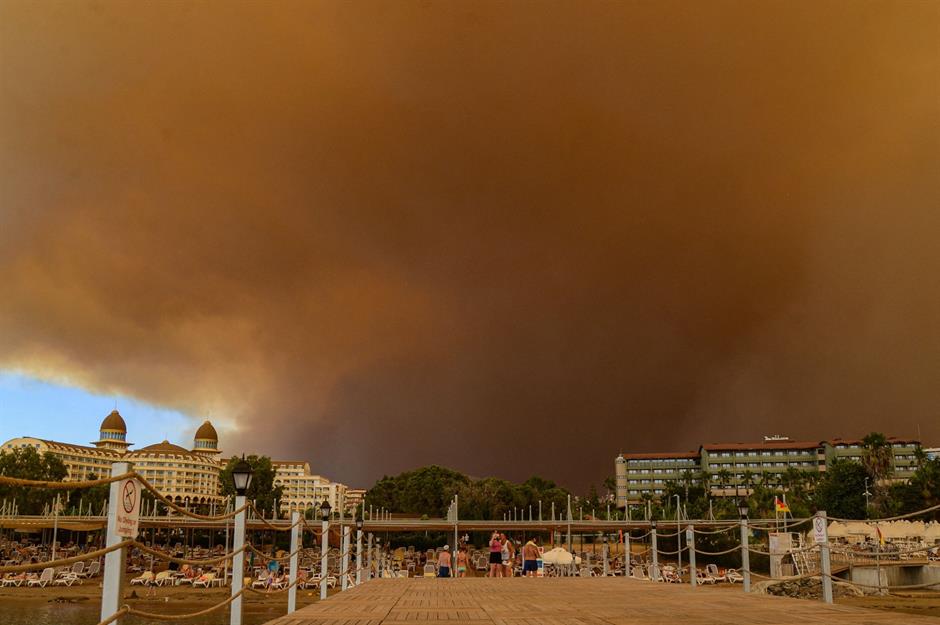
Tens of thousands of people were evacuated from their homes, as well as tourists at hotel complexes in the popular holiday resorts of Marmaris, Manavgat (pictured) and Bodrum, as fires continued to rage on in early August. Firefighters had to battle with searing 40°C (104°F) temperatures and many holidaymakers had to be rescued by boat to escape the flames.
Wildfires, Greece, 2021
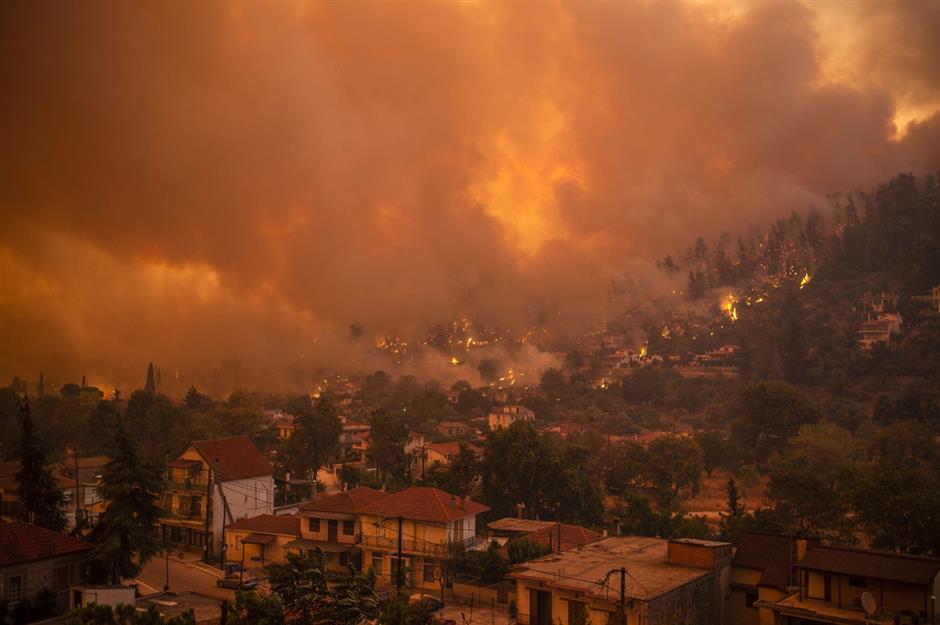
Wildfires burned throughout Europe over the summer months of 2021, and in Greece fires destroyed more than 140,000 acres of land in July and August. The blazes were worst on Evia, Greece’s second-largest island, and more than 2,000 people were evacuated.
Firefighters, helicopters and even the military were deployed to contain the fires. Vast regions of forest were razed, houses crumbled to the ground and locals and tourists had to flee. The fires broke out following the most severe heatwave in 30 years, which saw unprecedented temperatures of more than 45°C (113°F). This, in turn, has been linked to human-caused climate change.
Siberia wildfires, Russia, 2021
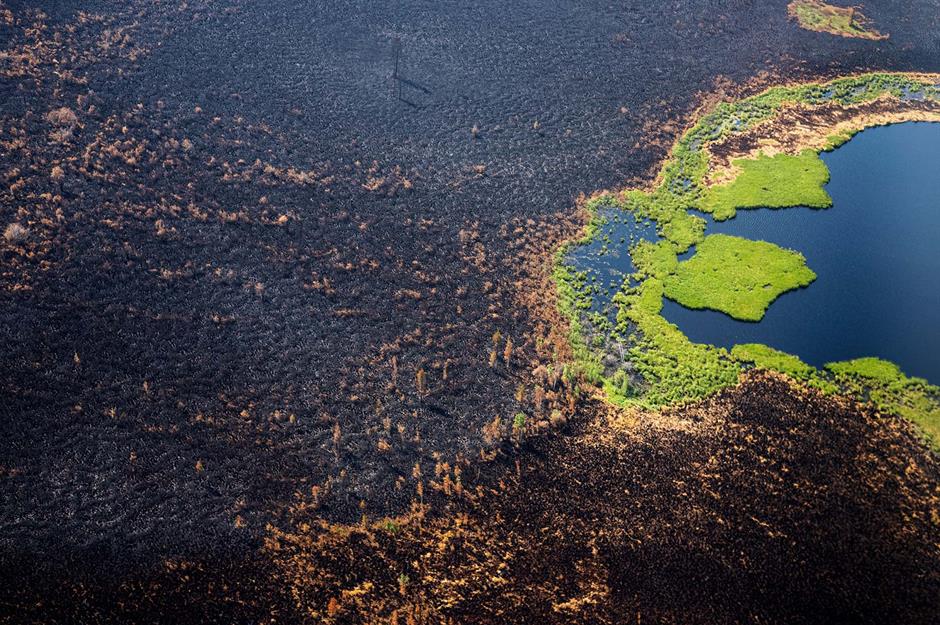
In the last decade, severe forest fires have occurred every summer in Siberia thanks to warmer temperatures and drought. A report by Greenpeace, based on data from the Russian Forestry Agency, revealed that 2021's fire damage was the worst since records began in 2001.
In 2021, more than 44 million acres of Russian forest were destroyed – an area equivalent to the whole American state of Missouri. These destructive events also caused an unprecedented spike in carbon dioxide emissions.
Siberia wildfires, Russia, 2021
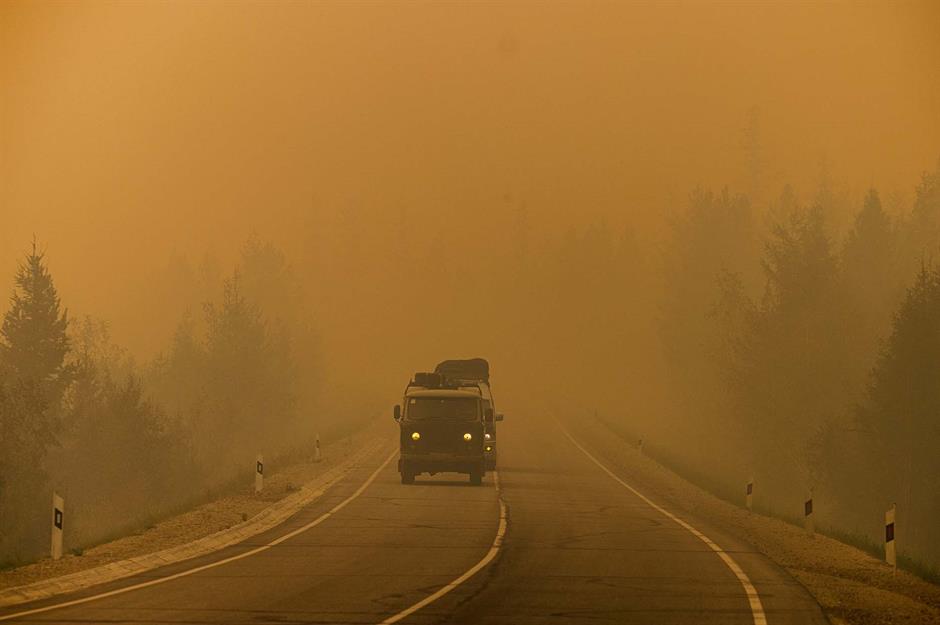
The fires had a significant impact on air quality and sparked one of the world's worst-ever air pollution events in the Siberian city of Yakutsk. In July and August, when the fires were at their worst, the city and surrounding areas were covered in thick toxic smoke, which contained high levels of particulate matter and possibly chemicals like ozone, benzyne and hydrogen cyanide.
Local authorities warned 320,000 residents to stay indoors as levels of PM2.5 (small particles that can enter the bloodstream and damage organs), reached 40 times the recommended limit.
Caldor Fire, California, USA, 2021
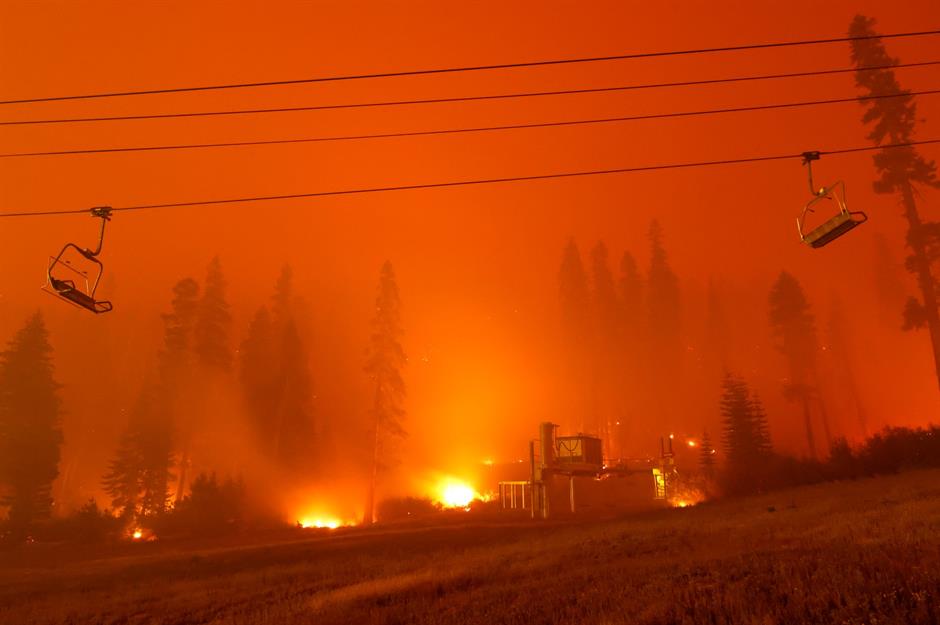
Thousands were forced to flee the Lake Tahoe area in California’s Sierra Mountains as a deadly wildfire burned the region. Known as the Caldor Fire, the flames broke out on 14 August 2021 and consumed a whopping 221,835 acres, destroying around a thousand structures. The governors of California and Nevada, Gavin Newsom and Steve Sisolak, both declared a state of emergency in Alpine, Amador and Placer counties near the lake, as fire churned through the mountains.
Caldor Fire, California, USA, 2021
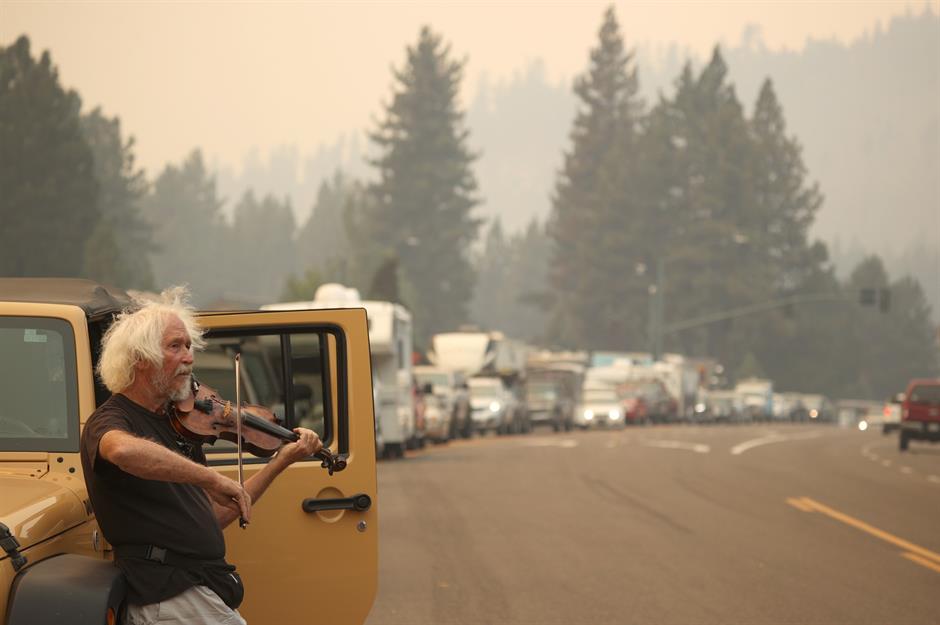
Following the evacuation order, the roads in the area quickly became clogged with residents and visitors scrambling to leave. Pictured here is evacuee Mel Smothers, playing the violin as he and thousands of others wait in traffic on Highway 50. Evacuees faced miles upon miles of traffic as the fire continued to spread nearby, with ash raining down on cars as they slowly moved through the haze.
Caldor Fire, California, USA, 2021
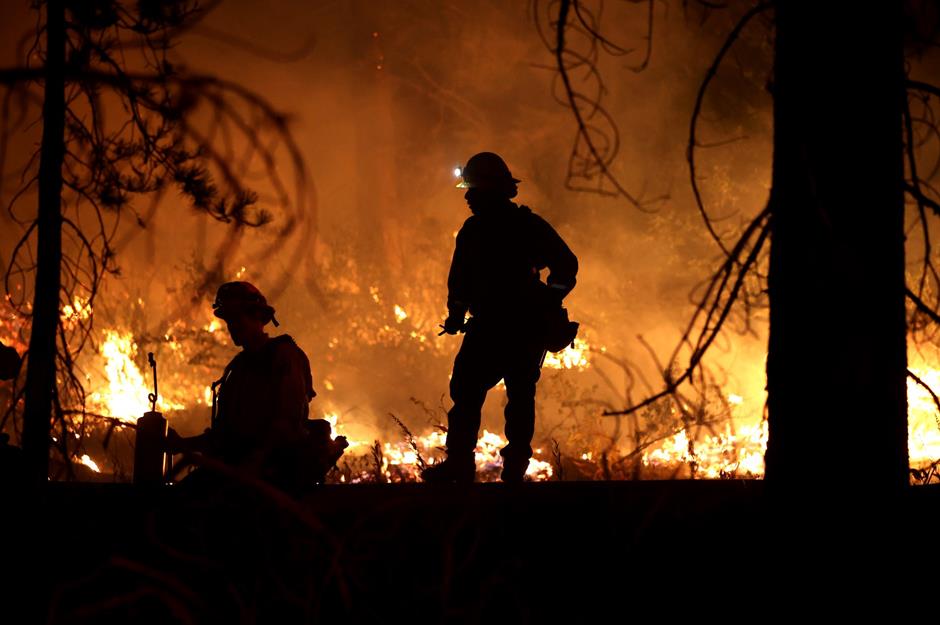
More than 3,500 firefighters battled the blaze, trying to keep it from reaching the Lake Tahoe basin, even using snow guns from the ski resorts nearby. Thankfully the community of South Lake Tahoe was spared, but it wasn't until 21 October 2021 that the fire was declared 100% contained. The fire, like many others in the western US, is thought to have been caused by a combination of the climate crisis, poor infrastructure and an increasing population, which has made the area extremely vulnerable to forest fires.
Wildfires, Boulder County, Colorado, USA, 2021
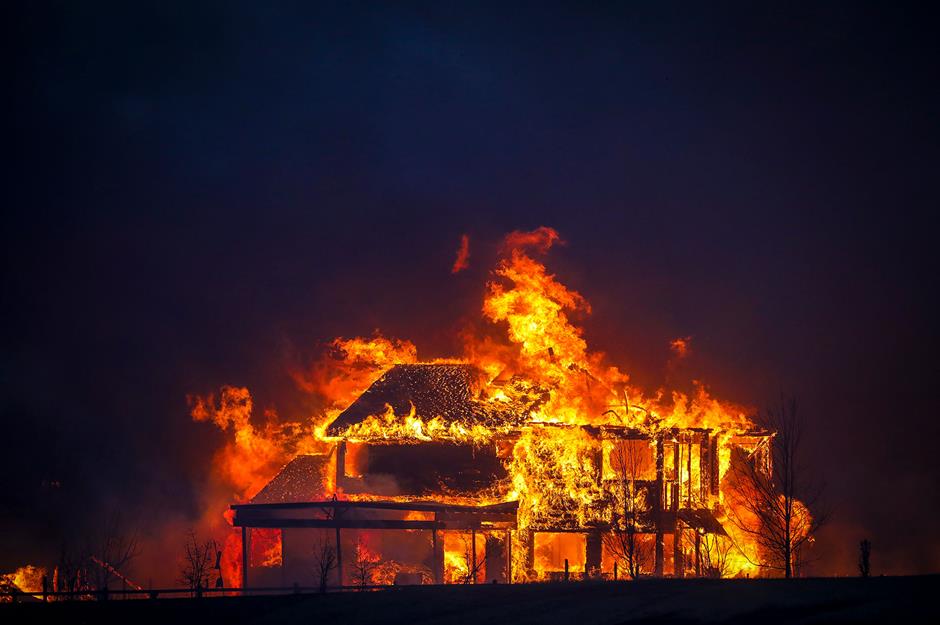
At the end of December 2021, fires spread rapidly through parts of Boulder County in Colorado after months of unusually dry weather. Firefighters struggled to control the situation as the blaze destroyed nearly 1,000 homes in days, and thousands of people were evacuated. State governor Jared Polis said the flames were consuming football field-lengths of land in seconds and declared a state of emergency.
Heavy snowfall on New Year's Eve and into the early days of January 2022 helped extinguish the fires, exposing the burned-out shells of homes and cars. Two people died as a result of the disaster.
Siberia wildfires, Russia, 2022
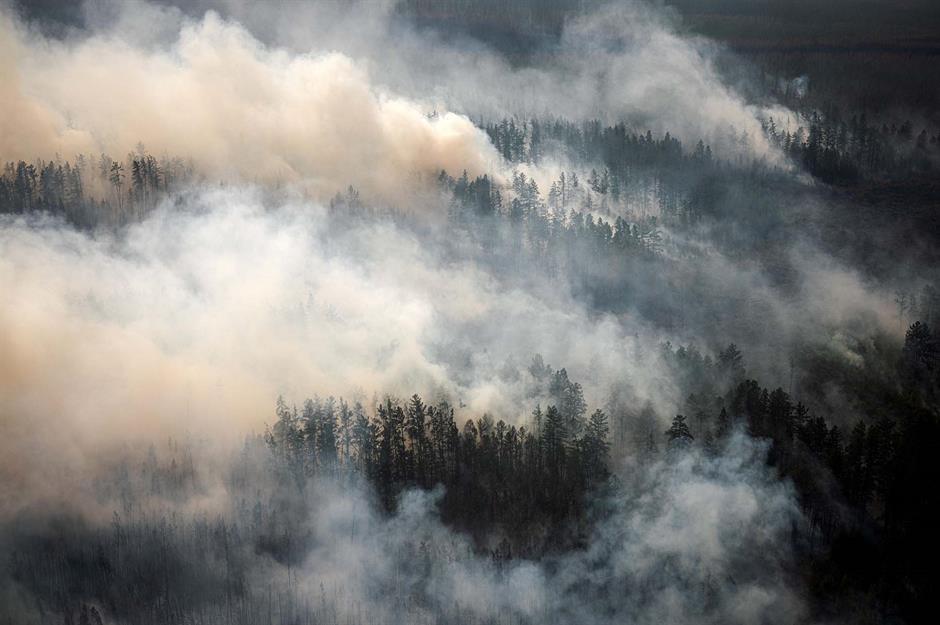
Siberia endured one of its biggest wildfire events to date in 2022. Larger than all other fires in the world combined, the blaze burned through a staggering eight million acres of forest from January onwards. More than 200 homes burned down, at least 13 people died and the fine particle concentration in the air reached hazardous levels in the city of Krasnoyarsk.
The fire continued unchecked into May, with some reports speculating that crucial Russian military fire-fighting units had been deployed to the war in Ukraine instead of to the fire zone.
Oak Fire, California, USA, 2022
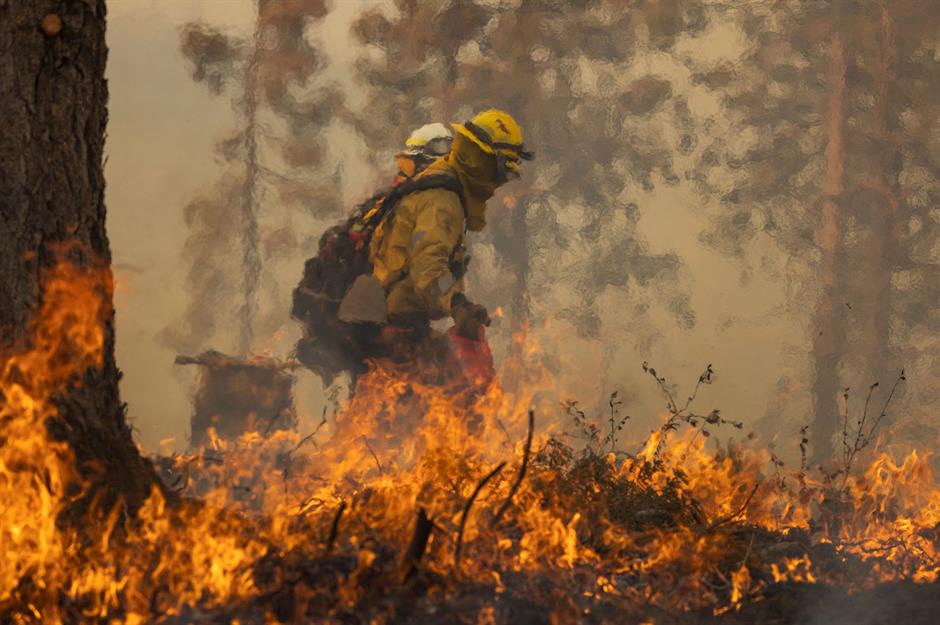
The fast-moving Oak Fire in Mariposa County, near Yosemite National Park, raged through the state on 22 July 2022 after extreme heat caused tinder-dry forests and underbrush to ignite. Within 48 hours, it had already burned 15,600 acres of land, forced 6,000 people to evacuate their homes and destroyed more than 10 structures.
Oak Fire, California, USA, 2022
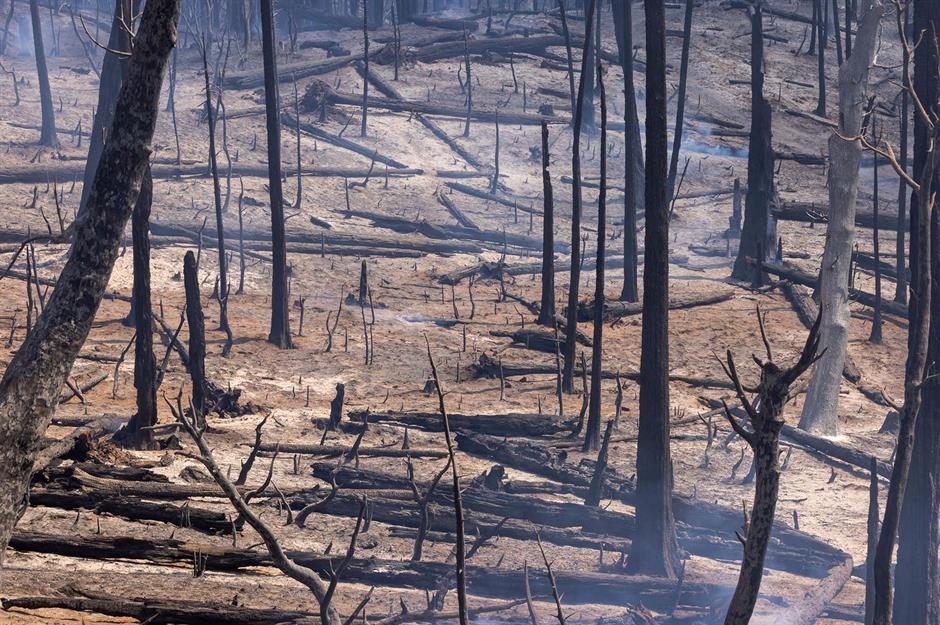
The blaze was fanned by gusty winds and extreme drought conditions, while temperatures reaching 38°C (100°F) meant dense and dry vegetation lit up like matchsticks. By the time it had reached 45% containment towards the end of July, more than 19,200 acres and 162 structures had been consumed. Then, just as evacuation orders were lifted, California was struck by another, even more ferocious fire...
McKinney Fire, California, USA, 2022
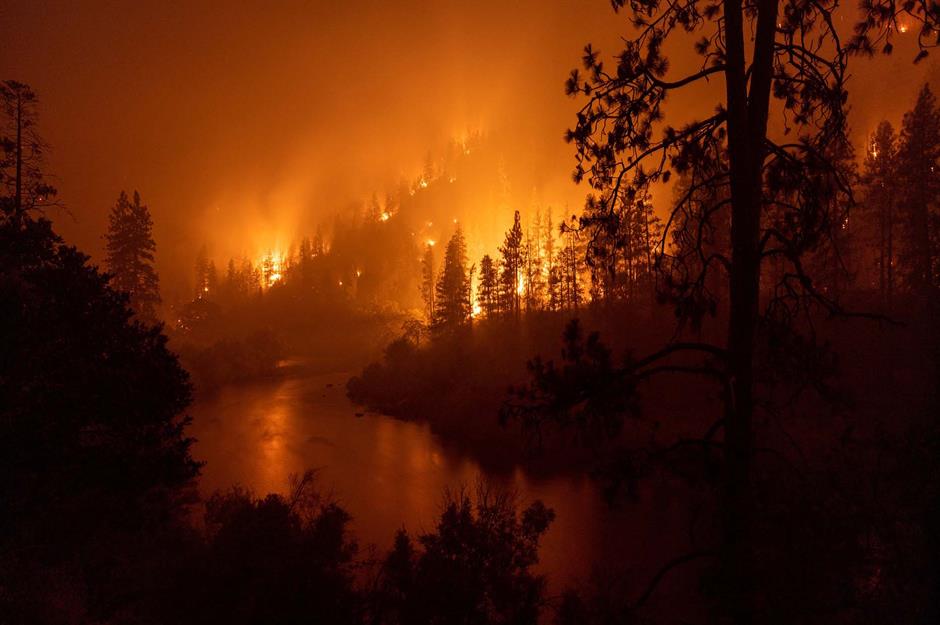
The McKinney Fire, which started in Siskiyou County just as the Oak Fire was under control, grew to become the largest blaze in the state in 2022. After the initial ignition, the fire swelled a staggering 62 times in size, torching vehicles and homes in its path. The blaze burned more than 60,000 acres of Klamath National Forest.
Even after the flames were mostly contained, evacuation orders remained in place while erratic winds and high temperatures posed a threat of reignition. Ultimately, the fire caused four fatalities and nearly 200 structures were decimated.
Mill Fire, California, USA, 2022
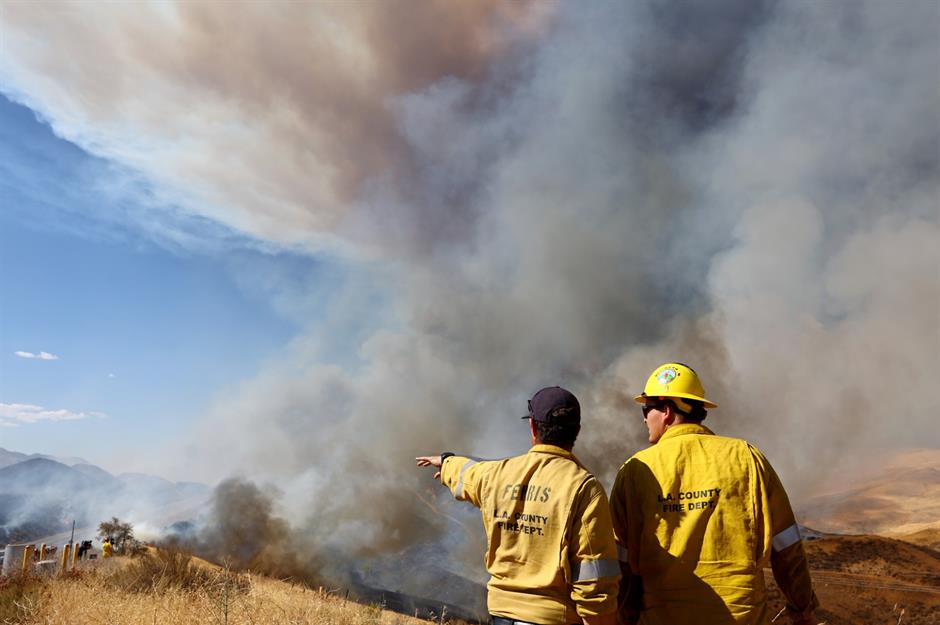
Northern California was engulfed in terrifying heat and wildfires at the end of August and beginning of September 2022. Among the blazes was the Mill Fire, which was responsible for the deaths of two people. It also destroyed at least 117 buildings and scorched more than 4,200 acres of land in Siskiyou County.
Forest fires, France, 2022
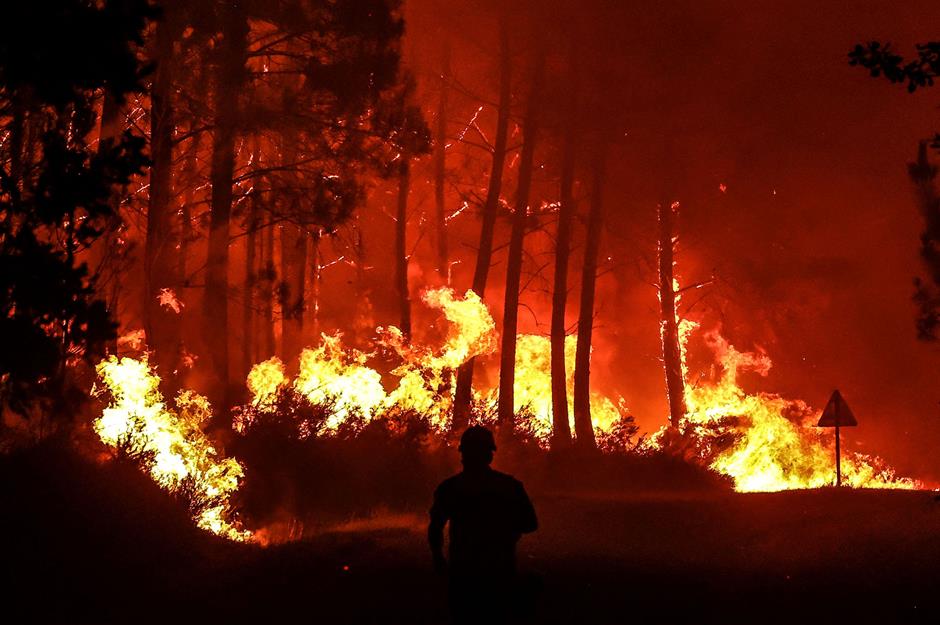
For two relentless months, the Gironde region of southwest France was beset by some of the worst wildfires in the country's history. In July 2022, exacerbated by a continent-wide drought that turned the region's forests into tinder boxes, fires incinerated 37,000 acres of pine trees and nearly 40,000 people had to be evacuated. Though the blaze was contained for a time, it continued to smoulder and flared up again in early August.
Forest fires, France, 2022
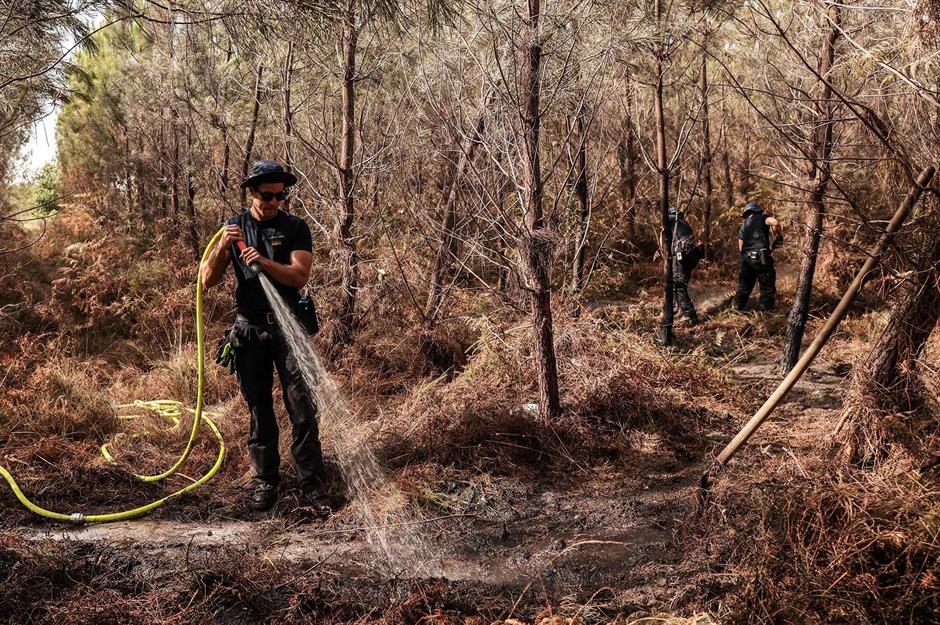
Firefighters with decades of experience said the fires were by far the worst they had ever witnessed. Come September, around 500 people were forced to flee once again as another wildfire began. As reported by Reuters, that brought the total land lost in France in 2022 close to 160,000 acres – six times the average for 2006 to 2021, according to data from the European Forest Fire Information System.
Nova Scotia wildfires, Canada, 2023
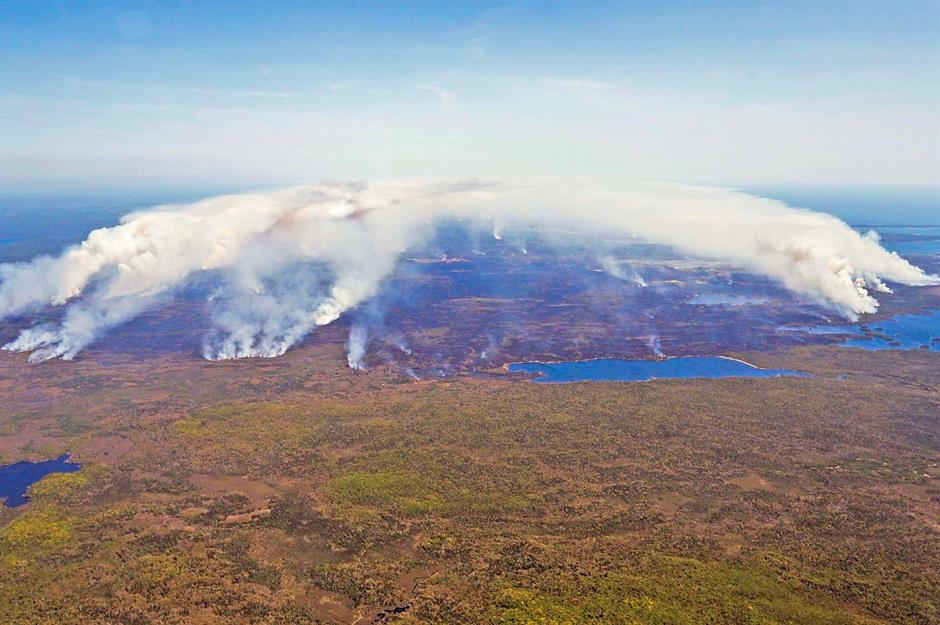
From May into June 2023, the eastern province of Nova Scotia battled its most destructive wildfires on record. Across the season there were 220 fires across the province, while officials confirmed that more than 60,000 acres were burned, with fires in suburban Halifax and Shelburne County alone consuming at least 250 buildings. Thousands of people were evacuated, but there were thankfully no reported fatalities.
Nova Scotia wildfires, Canada, 2023
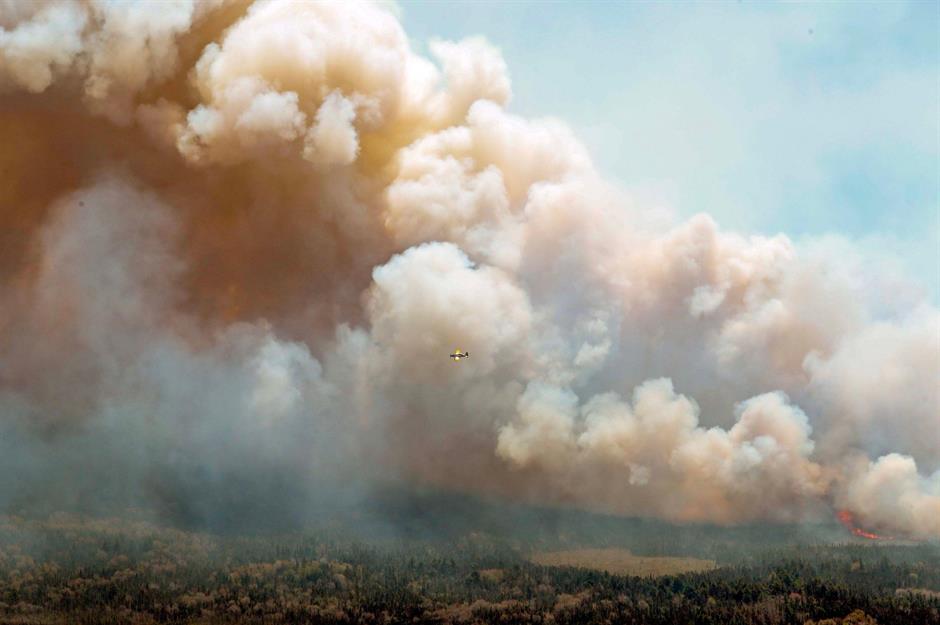
The firestorm was so severe that air-quality warnings were issued as far south as Virginia and Maryland in the United States. This image, taken on 31 May 2023, shows one of eight planes dispatched from neighbouring province New Brunswick dropping a mix of water and fire retardant on the Barrington Lake inferno in Shelburne County – one of the out-of-control blazes, which torched an area more than five times the size of Nova Scotia’s worst forest fire from 2022.
Greece wildfires, Greece, 2023
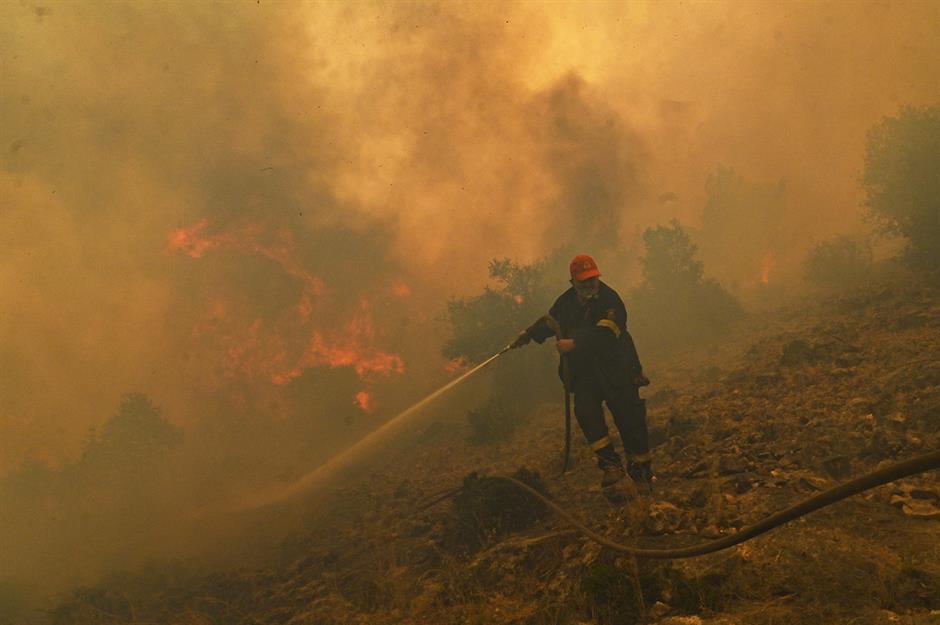
More than 19,000 people fled the Greek island of Rhodes in fear for their lives in July 2023, as firefighters struggled to contain some 82 wildfires burning across the island. Sixty-four of the fires started on Sunday 23 July, a stiflingly hot day when temperatures reached a suffocating 46.4°C (115.5°F) in the southern seaside town of Gytheio.
Greece wildfires, Greece, 2023
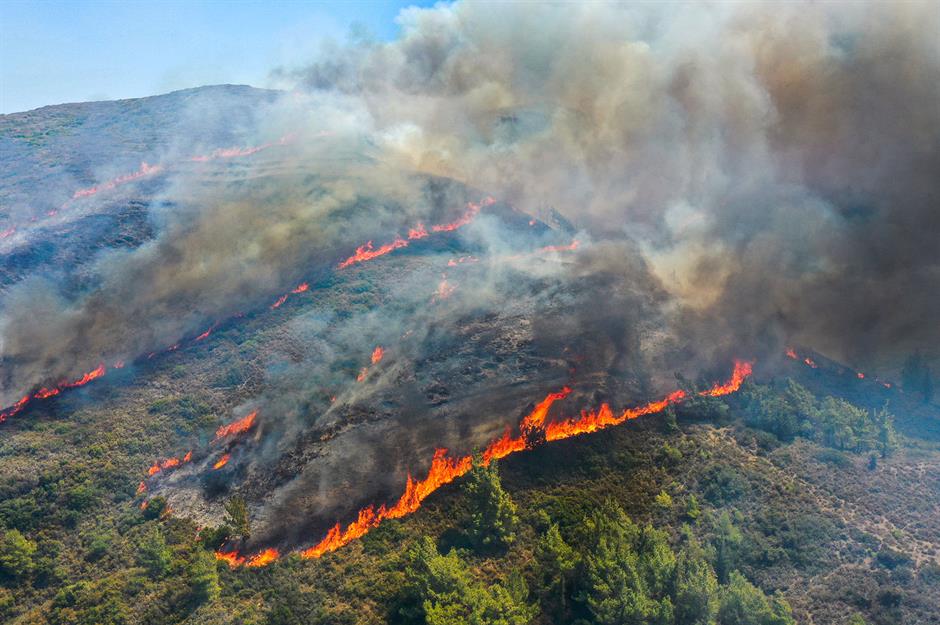
The trail of destruction and devastation forced residents to head north and vacationers to fly home, although many of them couldn't board repatriation flights for days. The Ministry of Climate Change and Civil Protection said it was “the largest evacuation from a wildfire in the country". Hot, windy, dry conditions, combined with exceptionally high temperatures brought on by European heatwave Cerberus, caused the fires to spread to the islands of Corfu and Evia.
Maui wildfires, Hawaii, USA, 2023
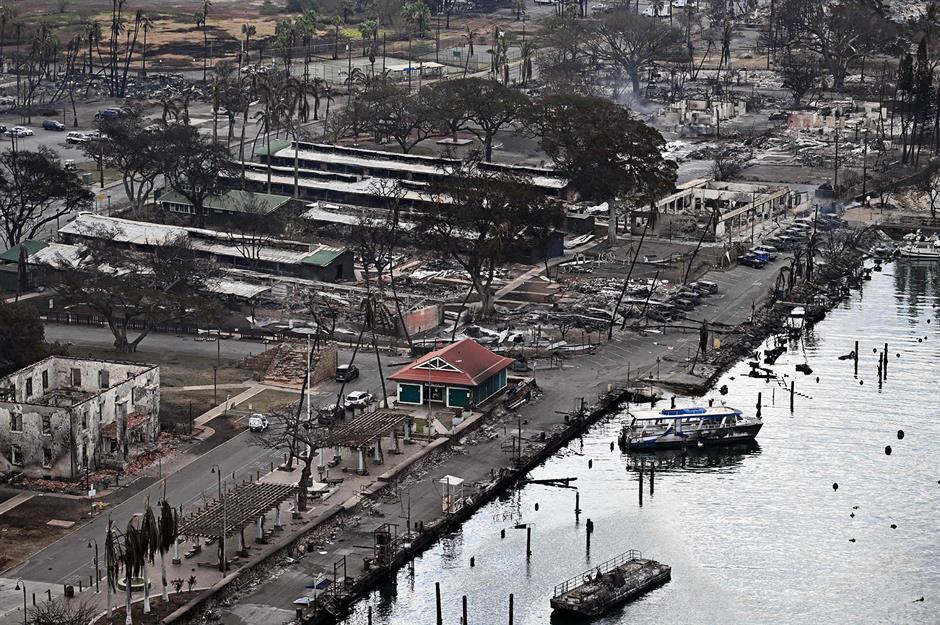
In early August, people jumped into the ocean to escape fast-moving flames and the historic town of Lahaina was wiped out when wildfires, fanned by winds from Hurricane Dora, swept across the island of Maui in Hawaii. Boats burned in harbours, 2,000-plus structures were destroyed or damaged and the oldest living banyan tree on the island, estimated to be 150 years old, was burned to a crisp.
With 102 people dead, the fire was America's deadliest in more than a century. "Our hearts [are broken] beyond repair," said Hawaii governor Josh Green.
Tenerife wildfires, Spain, 2023
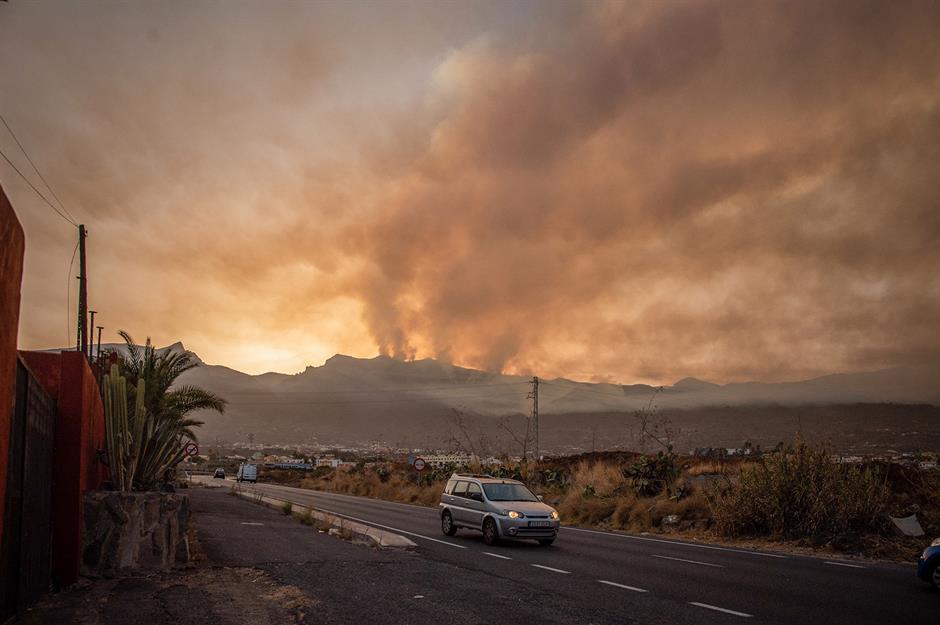
In mid-August, a ferocious inferno fuelled by flammable pine trees tore through 4,450 acres on the island of Tenerife, with mountain villages evacuated and flames threatening tourist hotspots like Santa Cruz de Tenerife. Authorities deployed 14 aircraft and 250 firefighters and military to battle the blaze, which started in the steep ravines near the Mount Teide volcano and were difficult to control. A heatwave the week before left the area bone dry, adding even more fuel to a fire that authorities described as "out of control".
Smokehouse Creek Fire, Texas, USA, 2024
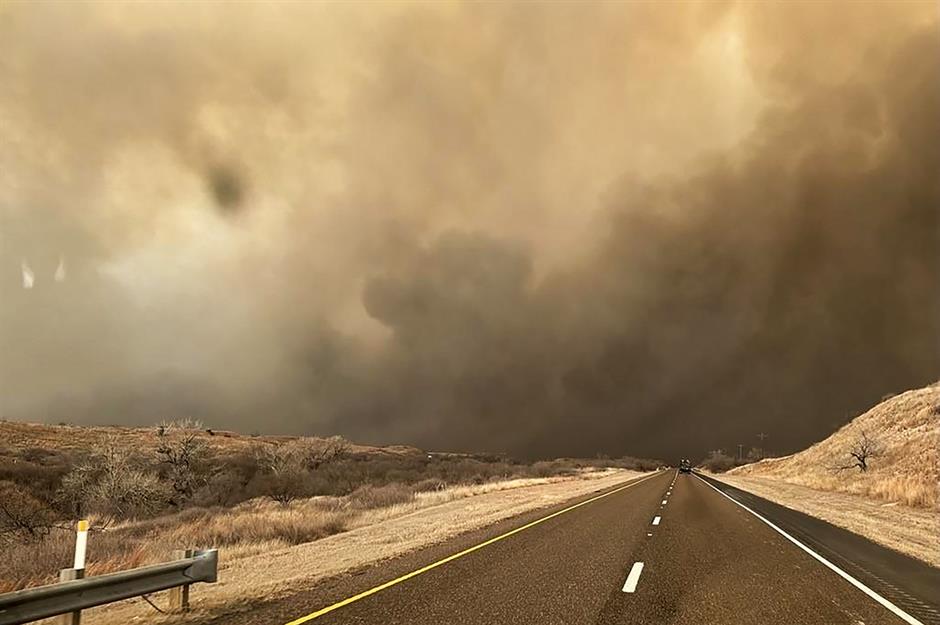
Texas endured its largest fire in recorded history in early 2024 – a sprawling blaze across the Texas and Oklahoma panhandles that took more than three weeks to contain. The flames engulfed more than a million acres of land in the Texan far north (pushing 2006's East Amarillo Complex Fire, which covered just over 900,000 acres, into second place), and scorched 70,000 acres across the Oklahoma border.
Beginning in late-February, the fire devastated cattle ranches across the region, killing at least two people and thousands of cows.
Park Fire, California, USA, 2024
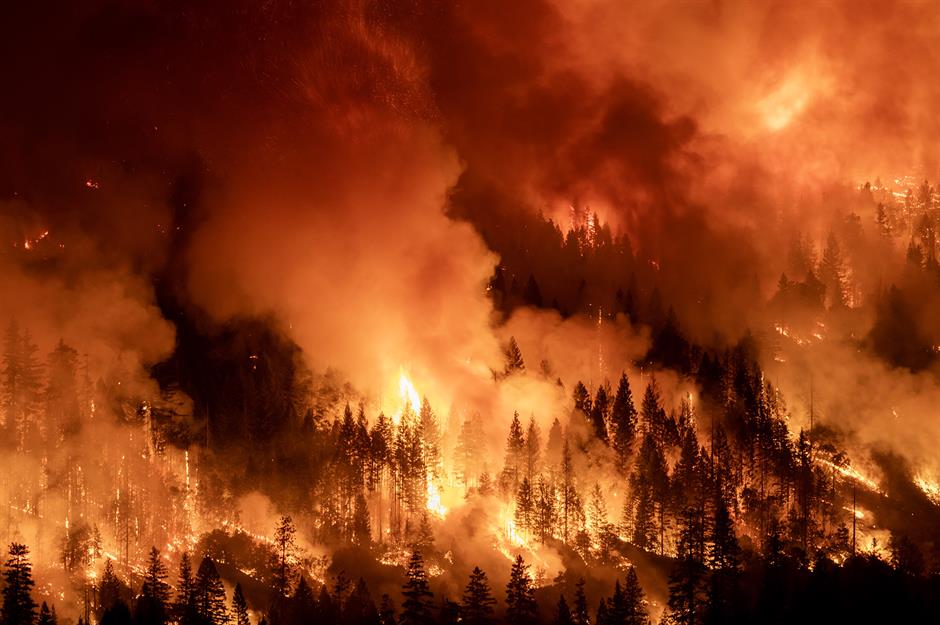
California's largest fire of 2024 was the Park Fire – an enormous conflagration that charred huge swathes of Butte and Tehama counties in the north of the state. California's largest-ever fire allegedly started by arson (a suspect was arrested and charged), the fire erupted near the city of Chico in hot, windy conditions that saw the blaze spread extremely rapidly. By the time it was contained, the Park Fire had claimed 430,000 acres of land and destroyed 709 structures.
Brazil forest fires, Brazil, 2024

Brazil received another brutal wake-up call in 2024, as fires devoured a wilderness area larger than the entire country of Italy – a 79% increase on 2023. More than 76 million acres of land burned throughout the year, 58% of which occurred in Brazil's Amazon biome, one of the world's premier hotspots for biodiversity. Brazil's worst drought on record fanned the flames, but so too did a spree of suspected arson.
Forest areas take years to recover from fires, and further droughts – and annual fires – could spell disaster for the Amazon's inhabitants.
Los Angeles fires, California, USA, 2025
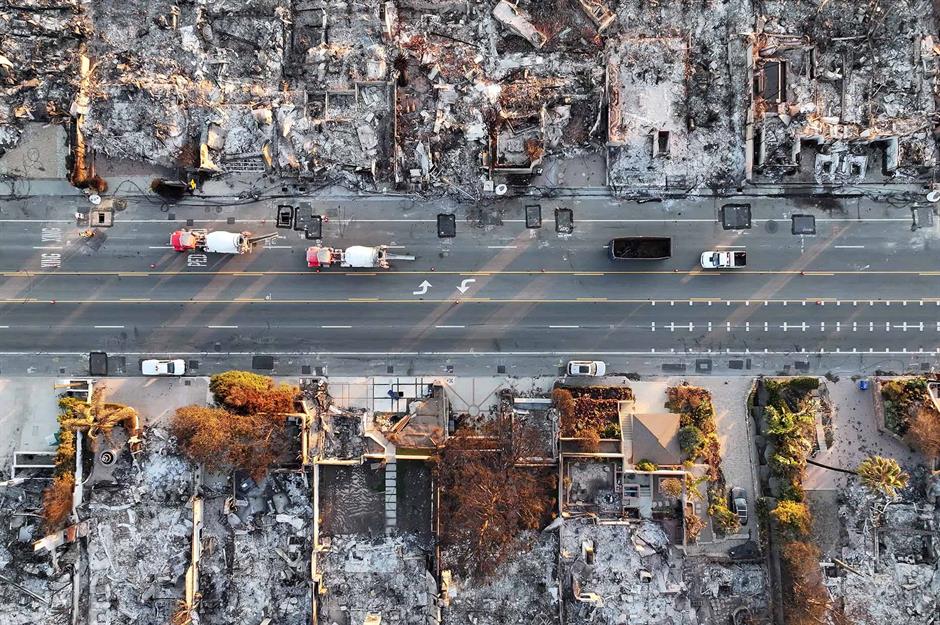
In January 2025, Los Angeles was ravaged by a series of fires that swept through the city streets with little warning. Spurred on by high winds and dry conditions, the flames wrought terrible damage on the city and claimed at least 29 lives.
The Palisades Fire erupted on 7 January as a brush fire in the Pacific Palisades neighbourhood, and spread to cover more than 23,000 acres. The Eaton Fire ignited on the same day in the national forest lands north of downtown, and covered 14,000 acres. On 22 January, they were joined by the Hughes Fire in northern Los Angeles County, and 10,000 acres were quickly eaten up.
Comments
Be the first to comment
Do you want to comment on this article? You need to be signed in for this feature